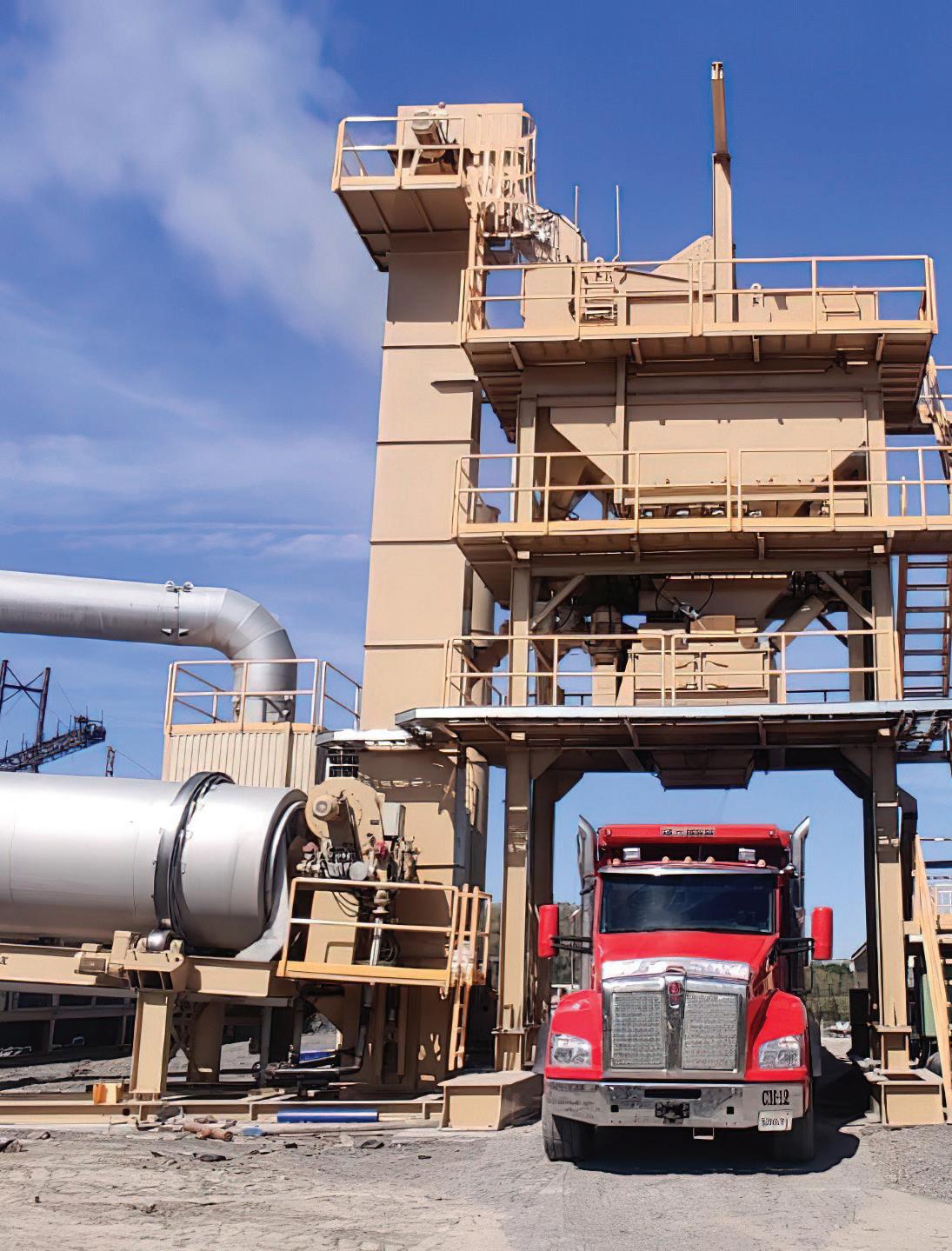

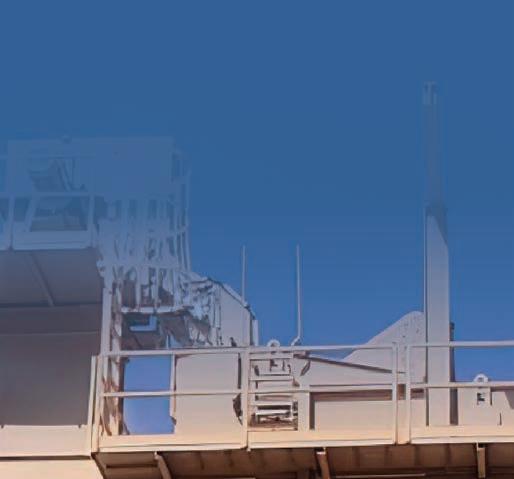

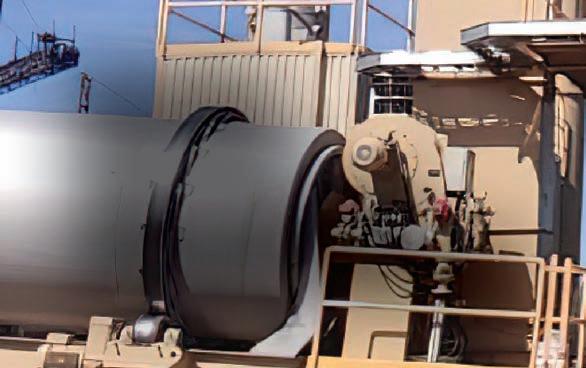



















At Gencor®, we’ve led the industry with the most fuel-efficient, environmentally clean and lowest-maintenance design available to the hot mix industry. Gencor Industries remains focused on proactively serving and satisfying its customers from all aspects.



Through improved cost-effectiveness, and quality of its products and services, Gencor’s personnel are dedicated to the principle of providing the highest quality to the industry to maintain a sustainable competitive advantage for Gencor®

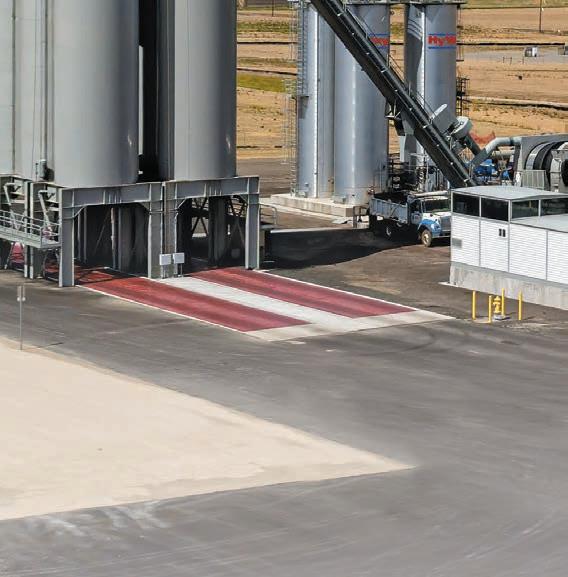

Published and copyrighted 2022 by AC Business Media. All rights reserved. No part of this publication may be reproduced or transmitted in any form or by any means, electronic or mechanical, including photocopy, recording or any information storage or retrieval system, without written permission from the publisher.
Asphalt Contractor (ISSN 1055-9205, USPS 0020-688): is published ten times per year: January, February, March/April, May, June/July, August, September, October, November, December, with an additional Buyer’s Guide issue published in August by AC Business Media, 201 N. Main Street, Fifth Floor, Fort Atkinson, Wisconsin 53538. Periodicals postage paid at Fort Atkinson, Wisconsin and additional entry offices.


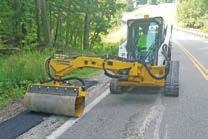
POSTMASTER: Please send change of address to ASPHALT CONTRACTOR, PO Box 3605, Northbrook, Illinois 60065-3605. Printed in the U.S.A.
SUBSCRIPTION POLICY: Individual subscriptions are available without charge only in the USA. The Publisher reserves the right to reject nonqualifying subscribers. One-year subscription to nonqualifying individuals: U.S. $45.00, Canada & Mexico $65.00, and $95.00 all other countries (payable in U.S. funds, drawn on U.S. bank). Single copies available (prepaid only) $10.00 each (U.S., Canada & Mexico), $15.00 each (International).


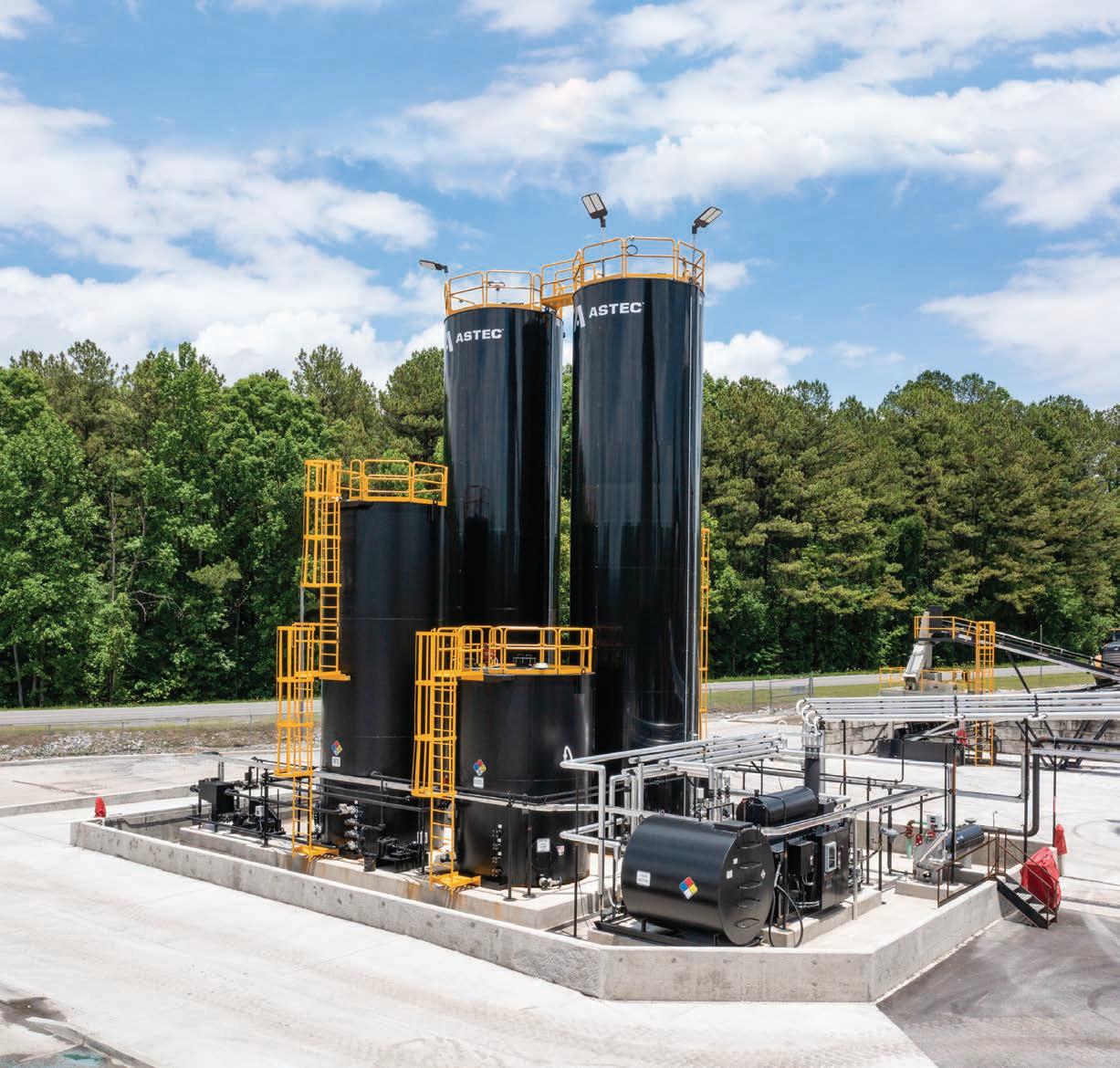

A serious departure from standard industry designs, Caterpillar will now have the sole intellectual property rights and acts as the exclusive dealer for Axenox screed systems through the CAT dealer network.
Read more at: http://asphalt. com/ghcp3m
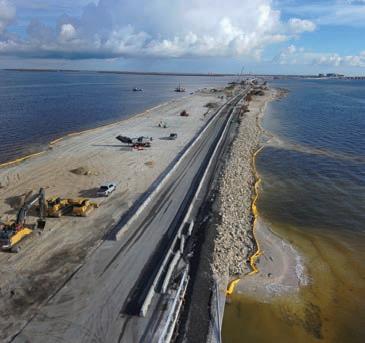
Less than 30 days after the worst hurricane to make landfall in Lee County, Florida, the Sanibel Causeway bridge reopens to traffic. Ryan Hamrick, of Superior Construction, discusses the unique challenges Superior Construction faced to get it done.
Read more at: http://asphalt.com/x9qoj4


Investigating the complicated history of city-planning, progress, race and roadbuilding through the lens of impacted communities. Each story assess the legacy and present reevaluations of major infrastructure projects in America’s cities.
Read more at: http://asphalt. com/hgh7vd
Trimble Industries introduces new Roadworks Paving Control Platform version 2.1, and takes another large step towards greater machine control
Read more at: http://asphalt. com/e0wb0k

Some step-by-step ways to help any asphalt contractor or plant manager take their RAP percentages to the next level. Read more at: http://asphalt.com/gcycrt
Astec provides a significant advantage as a single-source supplier for the diverse products and services involved in building and maintaining an asphalt mixing plant. Astec liquid AC storage tanks, tank farms, and heating system controls feature high quality construction and unmatched efficiency. We offer a variety of sizes and configurations that can be fully customized. Optimize your asphalt storage tanks and hot oil heaters with the addition of the Recon® mobile monitoring system to receive status updates on a smart phone, tablet or PC.

Scan QR code to see Astec’s full line of Tank Farm Components.

Brandon Noel, Editor

bNoel@ACBusinessMedia.com 234-600-8983
multiple ways for small businesses to share ownership interests with their workers, and still benefit in the process.
EDITORIAL
Editor Brandon Noel bnoel@acbusinessmedia.com
Contributing Editor .............................................Jessica Lombardo jlombardo@acbusinessmedia.com
Managing Editor ............................................................... Gigi Wood gwood@acbusinessmedia.com
Technology Editor Charles Rathmann crathmann@acbusinessmedia.com
AUDIENCE
Audience Development Manager Angela Franks

PRODUCTION
Senior Production Manger Cindy Rusch crusch@acbusinessmedia.com
Art Director April Van Etten

ADVERTISING/SALES
Brand Director Amy Schwandt aschwandt@acbusinessmedia.com
Brand Director Sean Dunphy sdunphy@acbusinessmedia.com
It's easy to look at the way things are, and imagine that they have always been this way. Change is so gradual it can be difficult to really pinpoint paradigm altering events while living through them. Take, as example, employment based benefits and how they’re structured.
During World War Two, the war effort decimated the labor force in America. The competition for workers led to a rise in wages, and creeping inflation. Many women started working for the first time. Despite this, there weren’t enough new workers to compensate, inflation kept getting worse. Then, in 1942, the Stabilization Act was passed.
It limited the ability of employers to freely increase wages, and the result was an early iteration of the employment based benefits packages that we are familiar with today. It was an effective way for companies to lure new workers, and now 78% of health plans are employer sponsored.
In today’s world, every sector of the economy has felt the impacts of the COVID-19 pandemic, and the dearth of skilled, available laborers. Every company is asking the same kinds of questions. How can we find new quality employees? How can we better retain the employees we have? How do we differentiate our business over competitors? One possible solution to consider is employee ownership structures.
Common sense might give pause to this idea, especially for small, local business owners. Those companies with fewer numbers of employees. However, there are
Rutgers University conducted a study comparing companies with majority employee ownership models versus companies with no such structure in place. The survey aimed to distinguish how the two groups faired under the stress of the pandemic and its aftermath.
The results showed that in employee owned businesses:
• Job loss was less than 25% of nonemployee-owned firms
• 35.5% of cut hours for one or more employees; compared to 62.9%
• 26.9% of pay cuts, compared to 57.3% of other firms
• For every person who lost a job, nearly three people lost their jobs at other companies.
• Sales, employment and productivity all grew over the same 5 year period
• Average profit margin was 8.5% higher than the average private firm
• Employment, post-recession growth and reduced turnover rates
Their key finding indicated, “Policies that encourage more employee owned firms will provide a future hedge against job loss in economic crisis, thereby reducing the volatility and durability of a negative economic cycle.”
There will obviously be some businesses that, for various reasons, cannot convert to an employee ownership structure. No solution is one-size-fits-all. However, exploring it can only be a good thing for both businesses and workers.
Sales Representative ................................................... Kris Flitcroft kflitcroft@acbusinessmedia.com
Sales Representative ................................................. Tadashi Soma tsoma@acbusinessmedia.com
Chief Executive Officer Ron Spink
Chief Financial Officer JoAnn Breuchel
Chief Revenue Officer Amy Schwandt
Chief Digital Officer Kris Heineman
Brand Director, Supply Chain & Green Industry Jason Desarle
Brand Director, Construction ..................................Sean Dunphy VP, Audience Development ................................... Ronda Hughes VP, Operations & IT Nick Raether
Content Director Marina Mayer GM, Online & Marketing Services Bethany Chambers
Content Director, Marketing Services Jess Lombardo

Director, Demand Generation & Education Jim Bagan Director, Enterprise Sales Kay Ross-Baker
CIRCULATION & SUBSCRIPTIONS
P.O. Box 3605, Northbrook, IL 60065-3605 (877) 201-3915 | Fax: (847)-291-4816 circ.pavement@omeda.com
LIST RENTAL
Sr. Account Manager Bart Piccirillo | Data Axle (518) 339 4511 | bart.piccirillo@infogroup.com
Tadashi Soma
(800) 538-5544 ext. 1267 | tsoma@ACBusinessMedia.com
201 N. Main Street, Fort Atkinson, WI 53538 (800) 538-5544 • www.ACBusinessMedia.com
Employee ownership can improve retention engagement, and more.




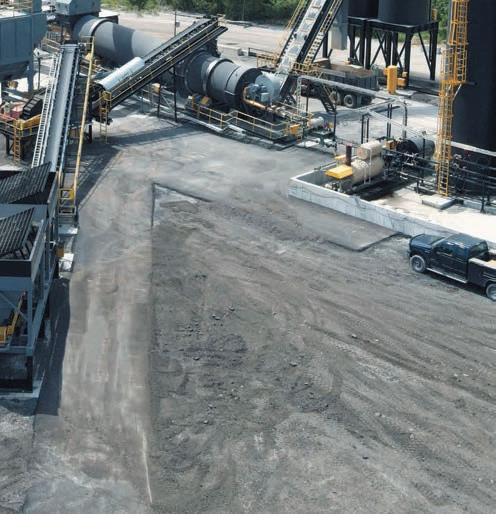

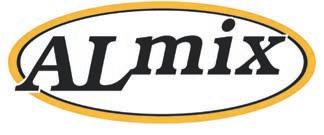

Handheld has announced the release of the all-new Algiz RT10, a heavy-duty 10-in. Android tablet for construction sites and tough outdoor environments. The new Algiz RT10 features an IP67 rating and the ability to withstand water, dust, shock and extreme temperatures.

• High-resolution, sunlight-readable 10-in. touchscreen

• Google GMS and Google Maps
• 5G, 4G/LTE high-speed data, Wi-Fi, BT and NFC
• Allows a user to remain connected to a network even in tunnels



• Optional scanner and integrated UHF, in addition to built-in expandability
www.ForcConstructionPros. com/22458120

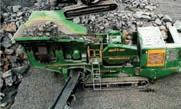
McCloskey International has unveiled the new J4 jaw crusher with new features for hard rock applications. Designed to withstand tough conditions, the J4 delivers high production due to its jaw chamber design and material flow. The large 1060mm x 700mm (42-in. x 28-in.) jaw opening accommodates large feed sizes, contributing to production in material processing.
The J4 offers a choice of either a two deck or one and a half deck system. The two deck delivers an extra product spec over the mid-size product conveyor.
The J4 is equipped with a number of features to ensure the workplace and the operator are secure. Engine safety shutdown systems, start-up alarms, full safety guarding, external maintenance access and a tagout capability on the isolator all contribute to the safe operation of the equipment.
www.ForcConstructionPros. com/22525638
Hewlett-Packard (HP) has announced the launch of HP SitePrint, a robotic solution that prints complex construction site layouts for businesses. HP SitePrint will be available to customers in North America through an Early Access Program, starting September 2022. HP SitePrint is an end-to-end suite of technologies designed to automate the site layout process, consisting of:
• A rugged and autonomous robotic device designed to operate in the conditions of the construction site
• Cloud tools to submit and prepare jobs to be printed, manage the fleet and track usage
• A touch screen tablet for remote control and configuration
• A portfolio of inks for different surfaces, environmental conditions and durability requirements
www.ForcConstructionPros.com/22457967



This machine features a six-way variable angle pitch blade. Choose from two blade options: a standard 2.9 cu. yd. blade or an optional 3.4 cu. yd. capacity blade.
The blade moves freely to lift, tilt and angle, as well as offers two-way mechanical adjustments to change the blade pitch to control how steeply the blade will dig into the ground. Operators can adjust the blade pitch from 54° to 58°.

Specifications include:


• Horsepower: 122 hp
• 22,300-24,900 lbs.


• Blade capacity: 2.9-3.4 cu. yd.
• Blade height: 3-ft. 7-in. (1.1 m)
• Blade width: 8-ft. 11-in. / 10-ft. 6-in.
www.ForcConstructionPros. com/22458525

4M Analytics, a company developing mapping products for infrastructure projects and construction sites, offers the 4Map solution for locating underground utilities including oil and gas lines, water pipes, electricity and telecommunications lines and renewable energy infrastructure.
The company is in the process of making the data of underground utilities available through a single dashboard that will eventually cover the entire U.S. Using this, engineers will be able to see exactly where utilities are. The solution is designed for civil engineering firms, engineering procurement construction firms, contractors and subsurface utility engineering firms.
www.ForcConstructionPros. com/22512619
Ammann has unveiled the eARX 26-2 Light Tandem Roller for construction projects. The roller features a fully electric drive that can operate for 18 hours or longer without recharging.
• No diesel engine – no periodic change of engine oil or filter
• No engine after-treatment structure (EGR, DOC, SCR, DPF) –no additional cost or regular maintenance
• No DEF tank – no filters to be changed, tanks to be cleaned or fluids to leak
• No cooling system – no cooling liquid to change
• The use of a maintenance-free articulation joint and vibratory system – no maintenance needed for the life of the machine
• The reduction of hydraulic oil to 4 liters
www.ForcConstructionPros.com/22512539

An 18-year-old saw a display for seal coating that inspired him to launch a multi-location asphalt paving enterprise. @vm2002 - adobe.stock.com
stage in the construction technology maturity curve.
The value of seal coating asphalt to preserve it and improve its aesthetic appeal are easy to understand, and one day in 1998, this simple value equation hit one young man hard, leading to a lifelong career as a paving entrepreneur and a national business footprint.

“I was 18 years old and getting ready to get done with high school,” William “Nick” Yoss said. “I was at Home Depot and saw the seal coat display, went across the street to Staples and had business cards made. Now, we have seal coating work all over the country for Home Depot, Walmart and Menards. We always subbed out pavement up until 2020, but we could not get subs with COVID-19 happening. So, we jumped into paving the same way we did the sealcoating.”
Today, Yoss is president and founder of Synergy Pavement Group, a family of companies that employs 32 and delivers asphalt paving, repair and maintenance from locations in South Beloit on the Wisconsin-Illinois border and Lake
Placide, Fla. Synergy Asphalt performs paving and Asphalt Maintenance Systems performs asphalt repair, maintenance and line striping.
The company tends to keep its South Beloit and Lake Plaza operations separate.
“We used to move capacity around between the two offices,” Yoss said. “It did not work very well.
Every time we get a large project, we would send a couple people down. Between the distractions that Florida may offer a northerner in the winter and time spent away from family, the arrangement did not stick. Separate crews and equipment pools deliver the full spectrum of Synergy Asphalt Group’s service offering from each office.
“We strive to be the best in pavement maintenance and asphalt paving,” Yoss said. “Today, we do everything in house—no sub work for concrete milling or pavement overlays.”
Scaling a company in a constrained labor market means there is one glaring top priority for Yoss.
“The biggest technology we are waiting for right now are robot employees,” Yoss quipped. That may be feasible for some disciplines with emerging technologies like robotic paving stripe prelining. But Spectrum Pavement Group is well past the whiteboard-and-Excel
The company uses multiple different software-as-a-service (SaaS) business applications to streamline its backoffice processes including Clockshark, a timesheet management and capture application. This gives Yoss visibility and control over hourly time clocks for employees and crews.
Workers and supervisors in the field access Clockshark on a mobile device to log time. Supervisors can clock in and out for an entire crew or switch them from one account to the other if they do not have individual accounts. Meanwhile, back-office users or administrators use a desktop browser application to set up these accounts, collect data for accurate payroll and track and manage employees. The software banks time transactions for later upload if there is no internet connection, making it ideal for a contractor working on linear assets between towns and cell towers. A combination of geofencing in Clockshark that records where employees are as they clock in and out on projects and internet protocol (IP)-based two-way radios help Yoss track where his crews and equipment are located.
Synergy Pavement Group also uses a paving industry-specific enterprise resource planning (ERP) application from PavementSoft, a software company that actually shares ownership and personnel with a national paving contractor—Manassas, Va.-based Brothers Paving and Concrete. Shawn Boyce serves as secretary of PavementSoft and chief revenue officer for Brothers.
“We designed and built out PavementSoft really to meet our own needs,”
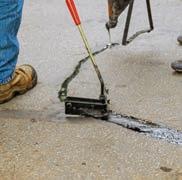
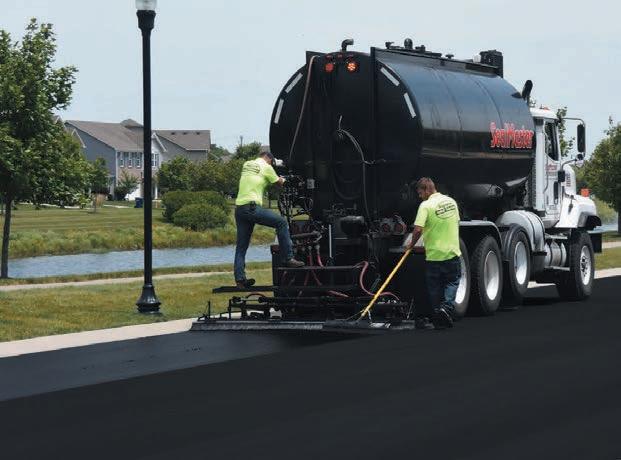

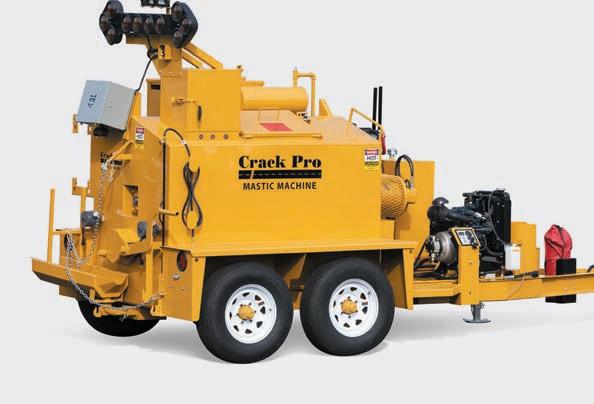




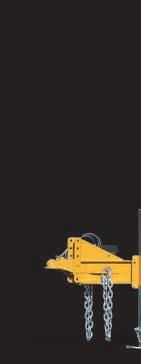

Boyce said. “That is what we use to run our field, for our crews and sales--everything runs through PavementSoft.”
PavementSoft can be considered ERP because it gives contractors a single, digital workflow for the full value lifecycle from lead to bid to project and crew management to invoicing—from quote to cash.
Contractors can license portions of or the entire application—PavementSoft does have an internal timeclock, for instance but a ClockShark user like Synergy Pavement Group does not need to use it.
“Our clock manager is pretty good, it includes geofencing,” Boyce said. “There are others that are a little bit better because they do more. But ours clocks in all of the employees when they get to the job, logs them out when they leave and rolls up into Payroll reports.”
“You can be on the job taking photos of progress, upload pictures, generate and fill work orders, do time and cost tracking,” Boyce said. “The foreman can see all the work orders and all the pictures. At the end of the day, they run a job report that shows paving cost, materials used and hours for each member of the crew, along with a profit and loss statement.”
Photos in PavementSoft can be attached to a variety of different documents or internal work orders. During work-in-progress, the application automates relevant weather alerts.
PavementSoft has about 400 customers across the United States and Canada, and takes on a limited number of new customers each year, positioning the software subscription like a selective fraternity or sorority.
“We are very selective,” Boyce said. “They need to be willing and able to change their philosophy about how they do things. Sometimes, the customers don’t want to do that. We start each year by taking about 100 names of companies that want to join. We pick the best 30. Then, we watch everyone’s sales improve immensely because of how quickly they can process estimates and capture cost.”
Integrated CRM and estimating can




help contractors increase revenue by letting them pursue more projects without a corresponding increase in time or effort. Invoices with photos help document completion and the software even collects a net promoter score (NPS) survey to help find, fulfill and bill the next customer.
“But PavementSoft is very simple to use. When you get your call regarding new business, you can enter info into the application and send out an email estimate in less than five minutes. We do our maps right in the application, our coding for pricing and descriptions are all in PavementSoft. We also get the ability to update a bid with a nice map and send it to customer as a Docusign file. Once it is sent back, we can do work orders off of that. As long as there are no change orders, it is one click of a button to invoice it off of the estimate.”
In projects that do involve change orders, they are hand written in the field but use a similar workflow to the estimate if they originate in the back office.





Synergy Pavement Group relies for milling on the Bomag 1330, giving them access to a number of productivity technologies including the BOMAG TELEMATIC app that:

• Monitors fuel consumption
• Tracks operating hours against duty cycle-based maintenance activities
• Captures and exposes location
• Prevents theft by triggering alerts when the equipment moves outside of a defined geomap
The company also runs LeeBoy pavers, Dynapac rollers, Case skid loaders and Sealmaster seal coating equipment. Actual autonomous equipment—those “robotic workers” Yoss mentioned, are high on his list.
“We’ve got to see more automation in our line of work,” Yoss mentioned. “Nobody wants to work out in the heat or do anything difficult. The older guys that have done it are retiring. A lot of our stuff already has some automation—BOMAG is looking to have a self-manned roller.”
A modern contractor should be as much a technologist as a tradesperson, able to identify and use technologies to deliver value. Yoss’s credentials as this type of practical construction technologist become even more apparent given his group’s early use of drone technology.
“We were one of the early ones to start using drones and including maps with estimates,” Yoss said.
The company has relied mostly on unmanned aerial vehicles (UAVs) from DJI.
“Our first drone was through them—was a very large drone,” Yoss said. “Then we got the Mavic—which was about the size of a VHS tape, then the Mavic Mini. With Pavement Soft’s program, we can get a picture of the site by satellite. But if we have a larger project where you can’t get good image off of Google Earth, we use the drone.”
Yoss wants to explore smaller drones that can launch from a truck bed or can hover or follow another object; or advanced drone photogrammetry software that unites the drone images with a geographic information system (GIS) or building information models or use machine vision to process photogrammetry into progress reporting.
“The progress reporting would be kind of cool,” Yoss said. “We could follow crews and use that to inform people.”
Technology is a pivotal tool for Synergy Paving Group from an operational perspective, but also helps Yoss and his team meet customer expectations that are more and more demanding.
“I am seeing more of that since COVID started,” Yoss said. “Customers want things done right now—and want it done to a standard that may be difficult. Someone may sign that Docusign agreement for the work and expect you will be on the site a couple days later.”
For more information visit http://asphalt.com/px4e2v
From innovative designs to Caterpillar dealer service and support, Weiler is paving the way to success for contractors across North America. Weiler’s material transfer vehicles, commercial pavers, road wideners, windrow elevators, static split-drum compactors, soil stabilizers, rock drills, tack distributors and front mount screeds are engineered with innovative features to increase productivity while reducing operating costs.
Weiler equipment is sold and serviced exclusively at Caterpillar dealers throughout North America.













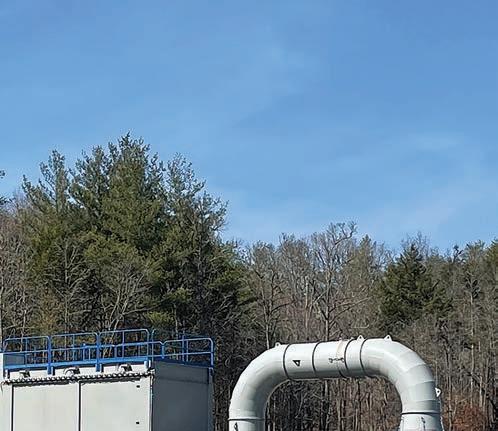

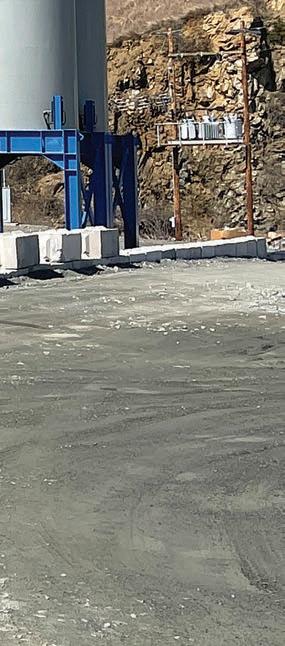
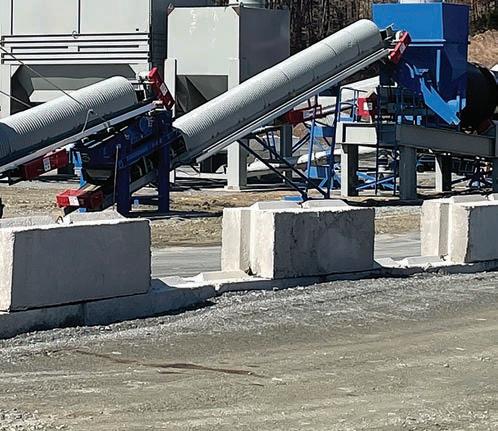
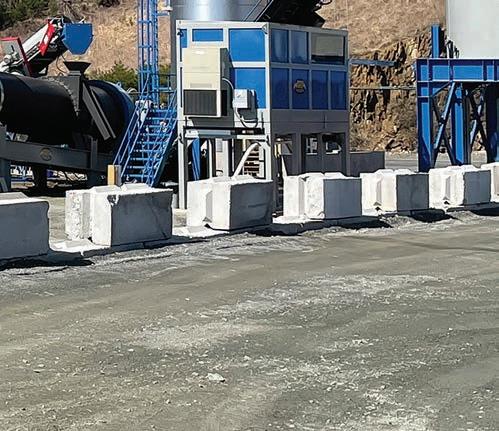



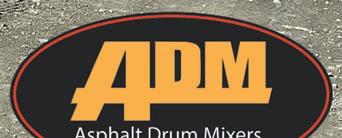

The Alabama-based producer partnered with ALmix on a new batch plant to meet customer needs
Since 1956, CA Langford has been providing Northern Alabama with aggregate materials from their Guntersville quarry. In the 1960’s, the company installed their first asphalt plant and purchased a White Manufacturing 2-ton batch plant in the 1970’s. The company ran that plant for over 50 years until 2021 when they installed a brand new ALmix plant.
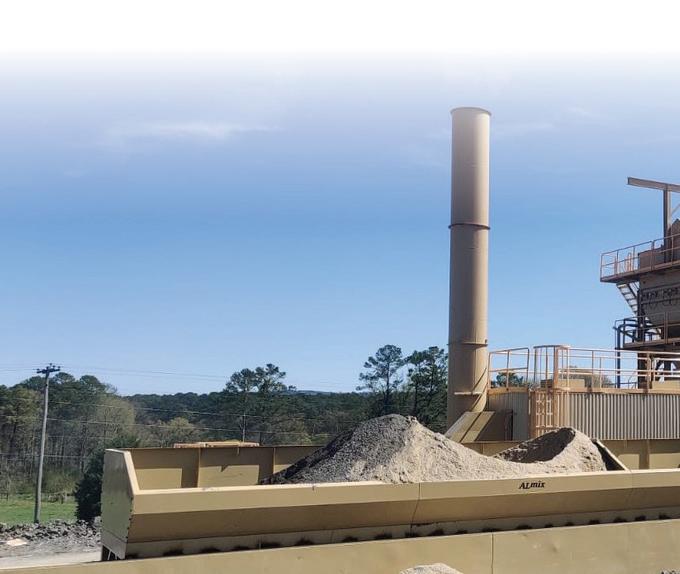
“We got very good at maintenance on that plant,” Scott Langford, president of CA Langford said. “The asphalt plant is a great compliment to our quarry and we wanted to be able to provide this service to our customers, but knew it was time for an upgrade.”
Initially, Langford thought the plant would only need a new mixer, screen and tower to make the plant operate more efficiently, but the more they investigated the component upgrades, the more they realized that a brand new plant would be a better investment.
“With the old plant, it was getting to the point where we were no longer able to find the support we needed to efficiently make repairs, parts just weren’t available,” Langford said. “Plus, you pick up the payment on a new plant when you look at downtime and last minute repairs. A new plant just became a no-brainer.”
By going with a new install, the company was also looking forward to finding support all in one place, instead of having to call on several different companies when they had an issue.
The decision to continue with a batch plant instead of making the switch to a drum plant was not something CA Langford took lightly. Since their company supplies mix to many different companies in their area, the versatility of the batch plant made it the right choice.
“We looked at switching to a drum plant but we’ve always sold to different contractors, cities, counties etc. and wanted to be able to easily adapt to the needs of our customers,” Langford said. “With their scheduling, we might not know what customer is coming in and what mix they want at any given time.
Batch plants are easier to get cranked up with different mix designs and without as much waste on the front end. We are able to run our customers a ton or two of the mix they need and then change it out to a different mix for another customer. If we have customers that like their mix with more fines, it’s very easy to tweak the mix.”
When looking to make a purchase, they turned to ALmix for support.
“ALmix still has a strong focus on the batch plant and the means to support them,” Langford said. “The concept of a batch plant hasn’t changed over the years but ALmix has added the technology to be able to tweak the mix easily while creating a more consistent product and keep it within the necessary specifications.”
Their new plant has four hot bins making it even easier for them to accommodate different mix types and the ability to switch from binder to seal to cold mix fairly easily. The technology
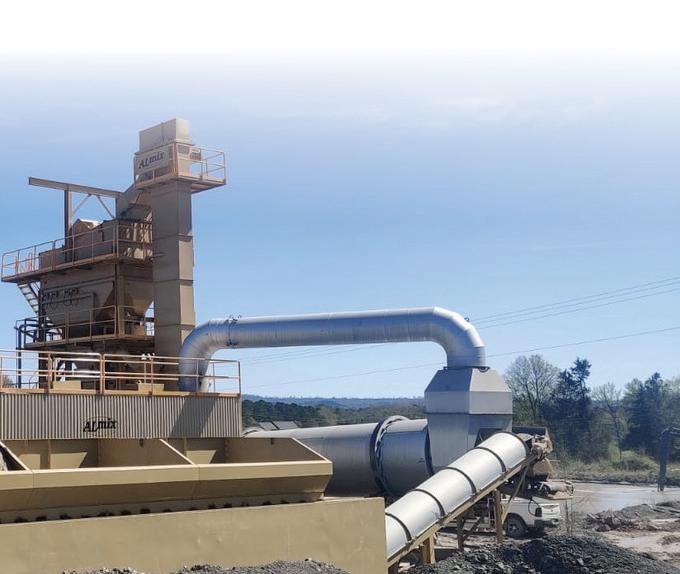



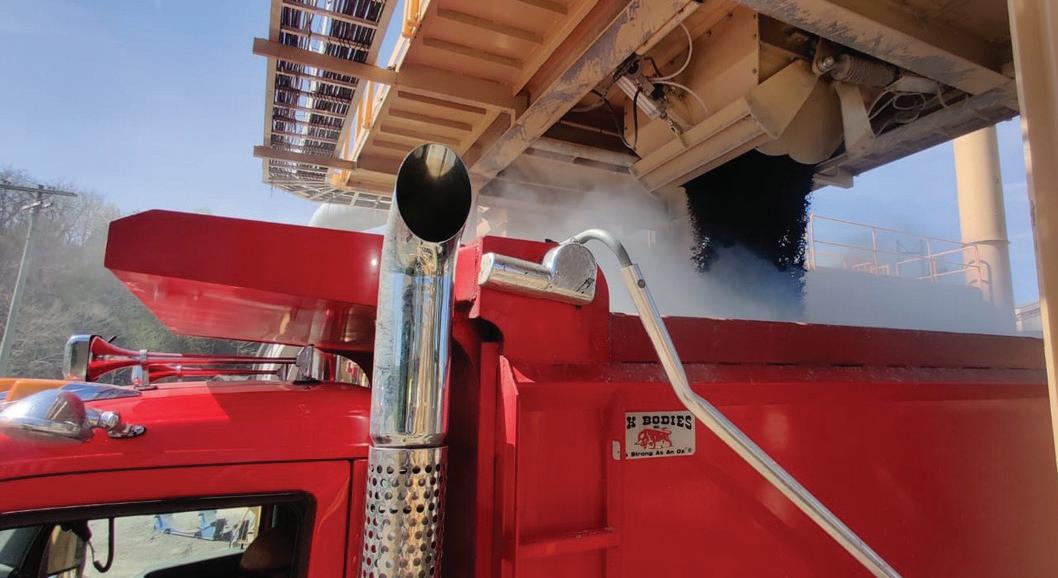



from ALmix gives the plant operators detailed information about how much material is in each bin and detailed information to help prevent any issues that may happen during production.
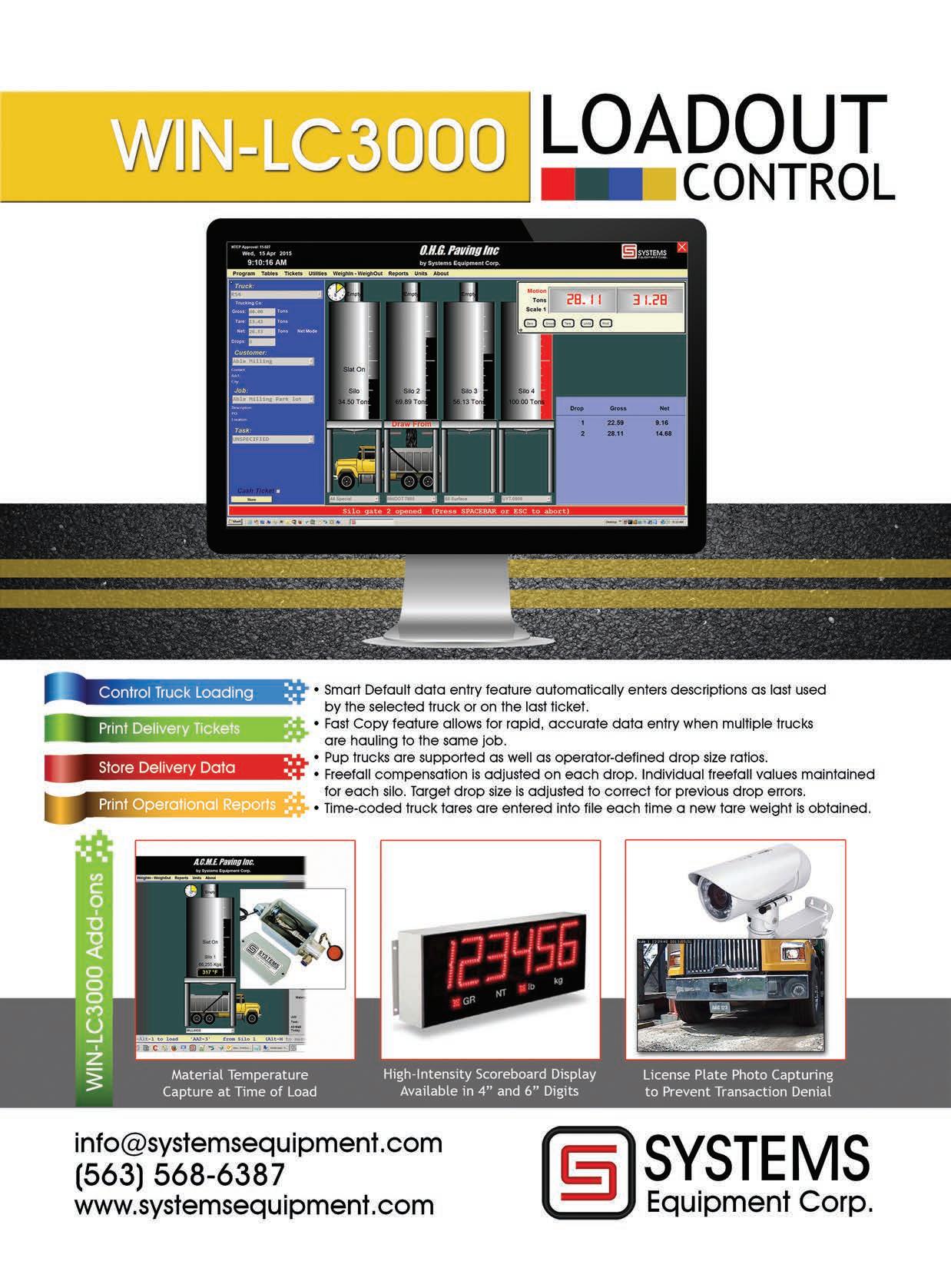
“We're also able to run the batch plant just a little bit hotter which a lot of our customers like because most of the work they're doing is in driveways or small parking lots,” Langford says. “Our customers like the mix a little hotter for these projects for a better quality result.”



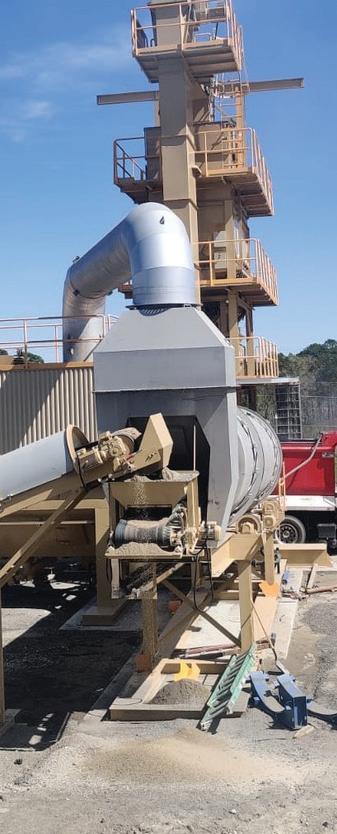

Support was a big part of a new purchase for CA Langford and ALmix was on hand to help from the install to the training and beyond.
“We had poured the foundation and had about 80% of the plant set up before they came on site, but we were glad to have them,” Langford said. “We needed their help with the wiring and to get the plant inspected, calibrated and tuned to be sure it was set up correctly. They also helped us get the gas hooked up and made sure we had the proper regulators and valves.”
The crew at CA Langford was also used to using push button switches to operate the plant and relied on the ALmix team to get them up to speed on the computer operation of the system.
“It was a bit intimidating at first, but once you got it going, the system is very intuitive,” Langford said. “They made it operator friendly so that if you know how to run a batch plant, you can figure out how to run this one very easily. Their system makes it almost bullet proof that you’re not going to put a bad drop of asphalt out there.”
“ALmix still has a strong focus on the batch plant and the means to support them”

The ALmix team remained onsite to ensure that the plant was running smoothly and that the entire CA Langford team felt comfortable with all aspects of its operation.
Beyond the bonus of a more reliable plant, CA Langford has found the
upgrade has given them many more benefits. The company, which produces around 25,000 tons of hot mix a year, has been impressed with the batch plant mixer and the level of consistency it provides.

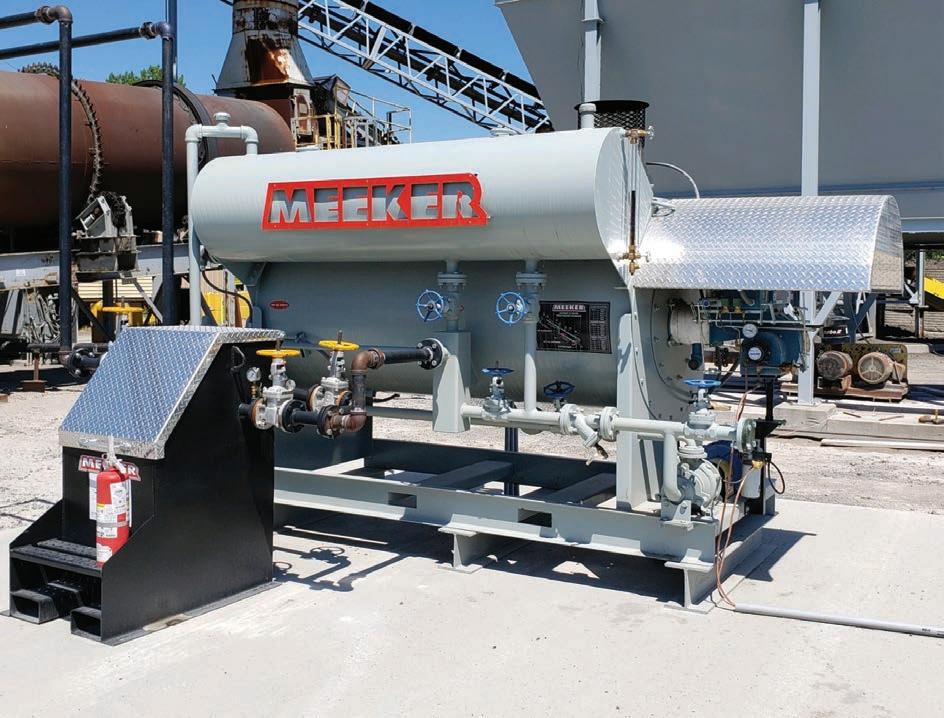
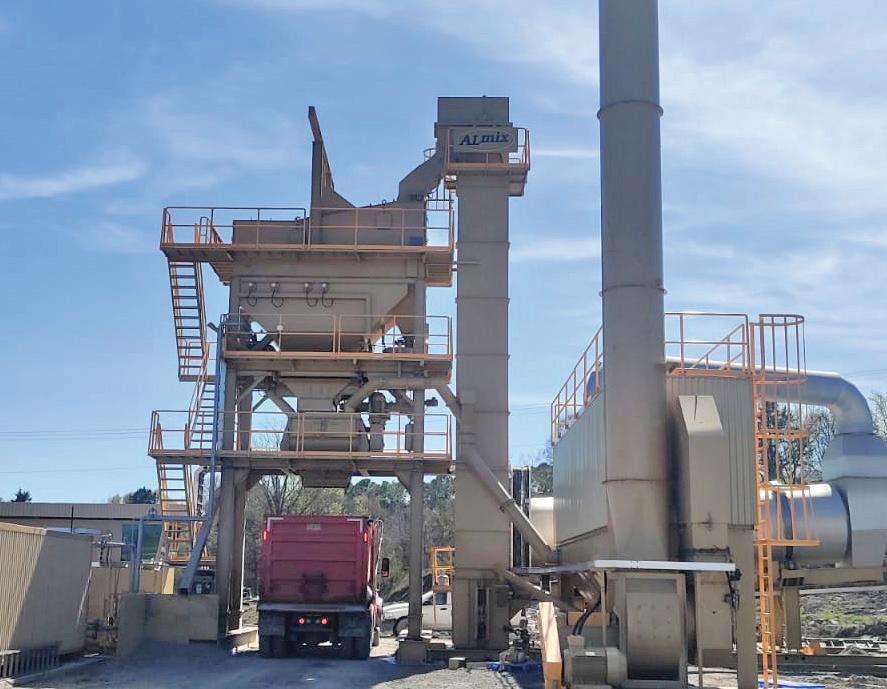
“The mixer really allows us to customize those one-two ton drops for our customers,” Langford said. “The paddles provide a much better quality product than what we were used to.”
Upgraded belts, feeders and screens have also all made a difference in day to day operations.
“On the belt feeders, you are able to be put in gradation off the feeder,” Langford said “Then the aggregate still goes through the dryer through the elevator and the bins. The dried aggregate is then separated to pull out through each bin. This again helps us stay in spec and provide a more consistent mix very easily for our customers. I know I can put out a more uniform mix, day in and day out, with the upgrades ALmix provided with this install.”
For more information visit http://asphalt. com/2wp4nr

















































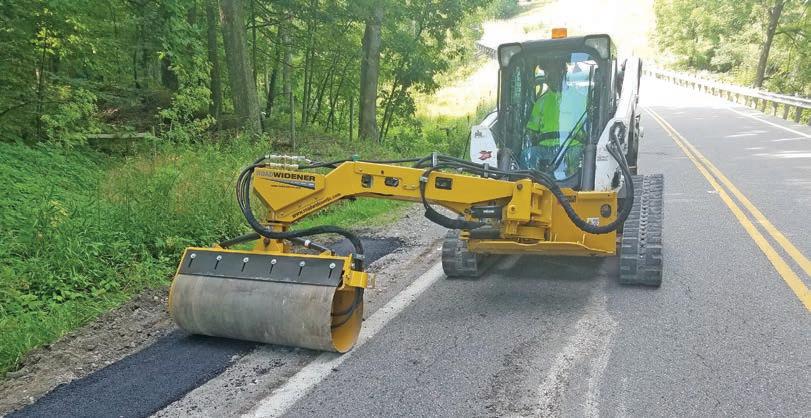
which offers little protection or stability for crew members. It's something engineers have taken steps to eliminate.

are worth their weight
There always exists more than one way to get a job done. With so many versatile tools at a contractor's disposal, and more being brought to market every year, it can be daunting just to figure out the best machine for a particular job, and, more importantly, if it will be worth the investment. However, improving jobsite safety is always one of the chief issues worth every dollar spent. Reducing injuries, potential insurance claims, and keeping workers on the job, are paramount.

Offset arm compaction attachments fit neatly into this category of tool. They seem, at first glance, like a niche product, with, perhaps, not enough benefit to justify using them, so we sat down with Lynn Marsh, the president of Road Widener LLC with 20 years of road construction industry experience,

to pick their brain, and help draw out what makes these tools so valuable on the jobsite, and primarily, what are ways in which they can offer benefits to safety.
From your perspective as a manufacturer in the industry, how would you define some of the most frequent challenges, in terms of safety, when it comes to certain compaction scenarios?
Traditional ride-on compaction equipment is a prime example of a potentially problematic design, especially on uneven or side-sloped surfaces. It is not uncommon for road construction crews to witness a silent rollover, watching their crewmember jump to safety, when the equipment they are operating unexpectedly gives way to gravity while compacting a steep slope. Many ride-on compaction rollers can potentially succumb to rollover accidents due to their rigid design and high center of gravity,
This far too common jobsite incident is mostly avoidable in the form of an offset compaction attachment that pairs with equipment many contractors already widely own. Offset Vibratory Rollers (OVR) allow crews to safely and effectively compact material from flat ground using the compaction attachment — ensuring a safer work environment at virtually any angle. What are some other options or features that managers and contractors should take into consideration when looking to improve safety on the job?
Remotecontrolled technology is a newer approach to compaction to offer better safety and efficiency while also reducing labor costs. This is achieved with OVRs by relocating the compaction drum to a remote-controlled offset arm that can be attached to almost any grader, compact track loader, wheel loader or skid steer — immediately solving most operator safety issues. By employing an attachment, the host machine provides a separate source of power for the compaction drum and, thanks to the offset arm, enhances stability and safety.
In its offset position, the drum can pivot up to 30 degrees and reach 30 inches below the mounting point. The host machine can drive safely on flat ground while the attachment arm extends to the furthest, steepest edge of sloping road shoulders and ditches. This allows the roller to easily compact slopes
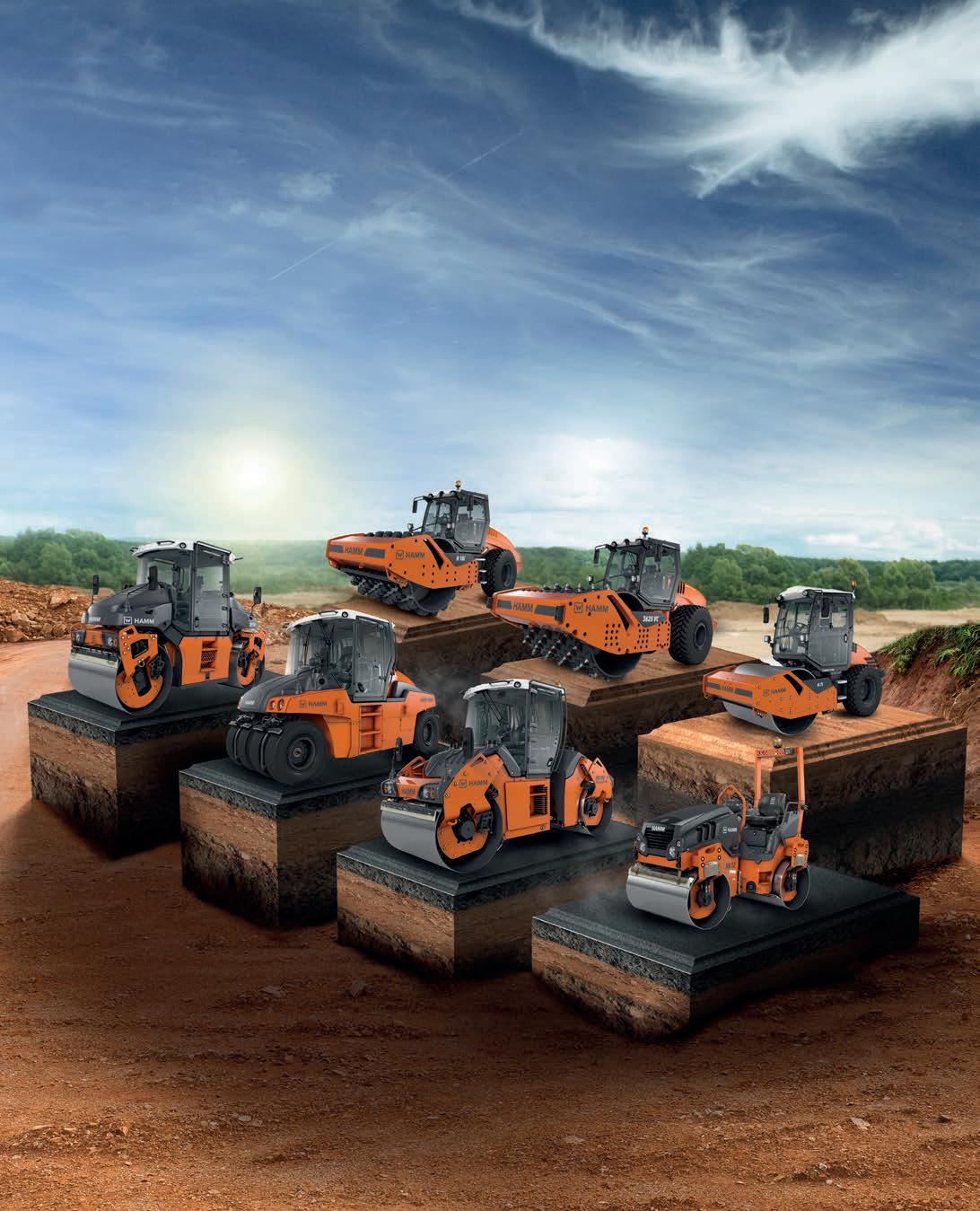
at various angles that would flip a more traditional compaction machine.
The increased safety offered by the offset roller design has other potential benefits like reducing workers comp claims, lowering insurance premiums and enhancing a contractor’s overall safety ratings — all key factors for contractors in a competitive bidding environment where every advantage counts.
What about other uses? In what ways do OVRs or other compaction roller attachments increase general productivity?

Although safety is obviously the top priority on any jobsite, the efficiency and quality of a job, along with equipment versatility, also prove critical. Compaction roller attachments can increase the efficiency and versatility of a contractor’s existing fleet by allowing them to work on a variety of road construction and utility repair projects, all with the equipment they are already familiar with. The attachments effectively compact a range of materials, from gravel, stone, and topsoil — even hot asphalt mix.
With the high infrastructure demand and the current prevalence of a scarce or inexperienced workforce, ease of use — in terms of equipment — is key to a project’s overall efficiency. Some offset compaction attachments incorporate remote controls, combining safety with an intuitive operation that is easy to learn, and allows the operator to adjust the height, angle, extension and compaction adjustments all from the comfort of the host machine’s cab.
Given their obvious differences, is it possible for the offset rollers to provide a comparable level of density to their ride-on counterparts?
Yes, they can. It's situational. While a compaction roller attachment may not achieve density as quickly as a ride-on roller on a flat roadway, it excels in a sloping ditch or trench which places an operator in a hazardous position. Because of the rigid design of traditional compaction rollers, and the stability issues working on a slope, operators tend to drive at a slower rate resulting in
a slower compaction times. Alternatively, the offset compaction roller attachment allows an average vibratory density of 106.5 pounds per cubic foot in just one pass on a typical gravel shoulder.
For example, the New Hampshire Department of Transportation (NHDOT) conducted a study to measure the effectiveness of offset compaction roller attachments connected to a wheeled skid steer versus the traditional steel drum and rubber-tired rollers used by NHDOT contractors. The study examined the density of gravel compaction on a road shoulder to determine which method of compaction would yield the most consistent results in terms of gravel density, ensuring a longer wear life of the road shoulder. NHDOT recognized that longer wear life would result in saving thousands of dollars for the state that could be reallocated to other areas to improve infrastructure.
attachment improved efficiency by allowing the operator to remotely control the position of the roller from the host machine, enabling coverage over the entire shoulder as compared to ride-on methods that require straddling the shoulder or not allowing for full compaction coverage.
Besides what we've discussed at-length already, what else would you believe to be important for potential contractors to know about compaction roller attachments in general?
Efficiency is not only seen through the work on the job but also by reduced transportation challenges. The discreet design of compaction attachments allow them to fit on any common trailer along with the host machine — and other primary attachments — and be towed by a standard pickup truck. No heavy-haul trailers or permits are required.
Additionally, compaction roller attachments can be purchased in a variety of interchangeable drum widths, ranging from two to four feet, providing heightened adaptability. To get the same benefit with traditional compaction machines, contractors would have to purchase multiple self-propelled units, all with engines and transmissions that would need to be continuously maintained.
In the past, contractors of the NHDOT primarily used self-propelled rollers in static mode to prevent the risk of rollovers or sliding into ditches. To prove the effectiveness of the study, the self-propelled rollers were utilized in both static and vibratory modes to accurately compare with the offset compaction roller attachment, which was only capable of operating with vibration.
In summary, the offset compaction roller provided a more consistent density of compacted gravel and gave workers added flexibility with its offset arm, eliminating the risk of injury and rollovers compared to other methods. Additionally, the compaction
And when it comes to the impact of maintenance, traditional ride-on compaction rollers have several grease fittings that need to be maintained, and they often have a buildup of debris that requires frequent cleaning. Without the need for an engine, powertrain or any associated parts of its own to operate, offset compaction roller attachments require 90% less maintenance than ride-on compaction machines.

Lynn Marsh who contributed to this article, is the president of Road Widener LLC and has 20 years of experience in the road construction industry.
For more information visit http://asphalt.com/kk3fi1
rafco igh erformance sphalt old atch is specially formulated to be e ible, provide a strong bond with the surrounding pavement, and resist raveling and rutting here other cold patch products fail to remain in place, rafco sphalt old atch establishes a rm grip in the repair area n addition to its enduring performance, rafco sphalt old atch is easy to apply o mi ing, heating, or special equipment required and no messy clean-up to deal with when you’re done Crafco HP ER Asphalt Cold Patch can be applied in a wide range of temperatures and climates and opens to traffic immediately





Every year, Asphalt Contractor Magazine reaches out to several experts within the industry, people with deep understanding and experience, to help us shed light on what the year ahead might bring. Last year, the Infrastructure Investment and Jobs Act (IIJA) officially became the law of the land. This enabled a huge wave of work to get underway with its historic investments in infrastructure initiatives all across the country. Now, with the passage of the complimentary Inflation Reduction Act (IRA), the federal government aims to influence, not just the road building industry, but other adjacent industries, as well, to take more aggressive and innovative steps against climate change and environmental disaster.
Meanwhile, the namesake of the bill (inflation) continues to be a big factor in everything from production timelines and job bids, to staffing gaps and retention rates. Throughout the year, the expectation was that, eventually, a corner would be turned concerning the

A year under the IIJA, and a few months after the passage of the Inflation Reduction Act, the industry still struggles to solve issues with labor shortages even as supply chain and material problems have seen some improvements
continuous problems with employment. That still hasn't happened, and questions remain about whether or not 2023 will be materially any different. New technology seems poised to make major gains, but their practicality and their adoption aren't always in-synch.
One thing seems a consistent through-line, despite the various challenges faced by manufacturers, contractors, employers and laborers, the industry feels alive and active.
Right now, there's an energy and a momentum that makes it feel like a great time to be apart of this vibrant community of hard working people.
Q:With the passage of the Inflation Reduction Act, what are some of the biggest immediate or expected impacts? Is there enough awareness through the industry about its programs and funding opportunities? Are next year’s prospects expected to improve under the legislation or will supply chain and employment gaps still hamper progress?
funding to upgrade plant facilities, and tax credits to reequip plants to reduce carbon emissions. The most significant issue will be the authority granted to the EPA to define a “low carbon asphalt pavement mix” eligible for procurement by the Federal government and states under the Federal-aid highway program. NAPA is continuously working all of these issues and maintains updated resources on AsphaltPavement.org/IIJA.
Black: The Infrastructure Investment and Jobs Act (IIJA) provided a significant boost in federal transportation investment that impacts every state highway, bridge, and transit program over a multi-year period. On average, federal investment accounts for over 50 percent of state spending on capital outlays.
Q:: With the support for electric vehicles (EV) growing, like the national charging network, gas tax revenues that were already in real trouble, are now in even worse shape prospectively. What do you think can be done right now to help State DOTs feel more confident? What alternatives to gas-taxes are currently available and what alternatives aren’t being discussed?
Copeland: IRA is significant legislation addressing deficit reduction, healthcare, taxes, environmental justice, and domestic energy production. For asphalt producers and suppliers, the biggest impact will be felt from the provisions dealing with climate change.

IRA takes a carrot-versus-stick approach to addressing greenhouse gas emissions.
IRA does not tax carbon or establish penalties for exceeding targets. Rather, IRA takes the approach of investing in low-carbon technologies through grants and incentives.
The legislation encourages the industry to decarbonize by providing grants to businesses to acquire environmental product declarations (EPDs), grant
The IIJA supported over 25,000 new highway and bridge construction projects in 2022. Typically states commit their federal funds and projects are awarded. Construction work will begin and may continue for a multi-year period. We saw this dynamic in the first year of the IIJA. States obligated their formula federal-aid highway program funds and put projects out to bid. Over the course of the year, state and local highway contract awards were up 20 percent compared to 2021 as projects got into the spending pipeline. As work on these projects began, highway construction activity increased over 8 percent in 2022.
Huitt: I think the Act does more to fund studies on how we can reduce carbon emissions than actually reducing them or impacting state/local projects. Also, as with most federal funds it comes with a lot of strings attached which are not good for our industry.
Ingram: In our area it seems that the rollout of this funding is slow to come. Maybe it is due to the awareness or communication. I don’t get the impression that preservation will benefit greatly from this initiative. As with all aspects of the industry, supply chain and employment issues are sure to affect progress here.
Copeland: For years, advocates have promoted replacing the fuel tax with a vehicle miles traveled (VMT) fee. A VMT fee is a user charge based on miles driven in a specific vehicle. The fee could be applied based on distance travelled and potentially vary based on geography, whether the vehicle was personal or commercial, vehicle weight, and time of day. Such a tool could be a practical replacement for fuel taxes, which have not been raised at the federal level since 1993; the purchasing power of these user fees has fallen significantly over the past 30 years, due to factors like inflation and the introduction of electric vehicles.
Several states and regions have implemented VMT pilot programs, including Utah, Oregon, the Eastern Transportation Coalition, and others. None have tested the concept at the federal level. But with the passage of the Infrastructure Investment and Jobs Act (2021), the U.S. Secretary of Transportation is required to establish a national VMT pilot to “test the design, acceptance, implementation, and financial sustainability” of such a system.
Advancement of a national VMT system will require adequate system development, generating nationwide awareness and informing public opinion, combining state and federal efforts into a unified national concept, and resolution of key issues learned from the initial pilot programs. A national VMT pilot is a valuable effort to test the effectiveness and acceptability of a potential future VMT system.
That is why NAPA, through its coalition partners, the Americans for Transportation Mobility and the Transportation Construction Coalition, is





Discover the strength of the most versatile, durable, and reliable crushing equipment on the market today. Take on even the toughest applications with confidence. Experience unparalleled parts and service support, 24/7. Let Eagle Crusher keep you up and crushing, year in and year out.



In 2019, NAPA funded a col laborative workshop with agen cies, industry, and academics to get a better understanding of what resilience means in the context of asphalt pavements. NAPA hosted webinars and published reports on this topic, available at AsphaltPavement. org/Resilience. The primary les sons can be distilled to three broad topics.
First, asphalt pavements can be adapted to changing climate conditions through routine maintenance activities. For ex ample, agencies can change the specified asphalt binder grade in response to expected changes in temperature extremes.
Second, asphalt pavements can be designed for resilience during initial construction and reconstruction through Perpet ual Pavement design and other approaches that strengthen the entire pavement structure.
Finally, the reality is that no agency will have the funding to strengthen and adapt their entire pavement networks to every potential hazard. So when disaster strikes, asphalt’s ability to be constructed and open to traffic in hours is an incredibly important tool for quickly put ting damaged roads back into service.
funding research being conducted by the Eno Center for Transportation to create a series of key performance indi cators that can measure how well the pilot works in terms of administrative costs, participant satisfaction, social equity, and other factors as determined through our previous work. The perfor mance indicators will include a discus sion of the rationale, the data needed for evaluation, and benchmarks to deter mine success.
The goal of the research is not to rec ommend a permanent VMT fee struc ture, but to inform the ongoing pilot.
Having smart, data-driven performance indicators and parameters in the pilot will be critical to making an informed policy decision in the next surface trans portation law about whether to make such a fee permanent.
Huitt: You are just going to have to charge based on usage. There is no other way. It should be done similar to income taxes where you pay as you go based on an estimate of your mileage. Paying it to your insurance company is a good way to collect it. Then, at the beginning of the next year, you square up with either additional payment or a refund. If you don’t pay, you don’t have insurance and can’t drive.
Ingram: I’m not seeing a ground swell of interest in EV growth here. I just don’t see that technology taking off in a huge way. Alternative funding streams here at home include vehicle registration fees and tolling. The infi nite wisdom of our elected officials has removed some of the funding mecha nisms that were in place.

development is needed to achieve deeper decarbonization goals. At the plant level, this includes technologies like lowcarbon burner fuels, electrifying thermal processes, and cold central plant recy cling. Looking up the supply chain, this may include carbon capture, utilization, and storage (CCUS) in the petroleum industry and even the use of alternative (bio-based) feedstocks for asphalt bind ers. The IRA funding is an important step toward funding these initiatives. But continued and more significant investment will be needed to achieve net zero greenhouse gas emissions.
Huitt: The financial incentives are probably not enough to be a driving factor. We are going to have to figure out how to make the free market system address sustainability.
A lot of the IRA funding was tied to incentive-based measures, looking to help businesses make the move towards sus tainable resource, materials, and processes. Will it be enough to move the industry towards desperately needed climate goals and projections for emission reductions? Are the financial incentives enough of a driving factor?
Copeland: There are several readily available technologies and practices to reduce the carbon footprint of asphalt pavements that are economically viable, but the industry is often constrained by external factors that it has limited ability to control, such as agency limitations on the use of reclaimed asphalt pavement (RAP) in new asphalt mixtures. With so much attention focused on reducing greenhouse gas emissions, we are starting to see some agencies that are willing to revise their specifications to allow for asphalt mixtures with lower embodied carbon. This is very encouraging.
On the other hand, we know that a significant amount of research and
Q:We know that each party has very different views on how they would approach funding/taxes, but, as a matter of generalization, which stated policy type most directly benefits the immediate future for the industry? If legislative power were to change hands, how might this impact the road building market? Would continued stability in that regard be better?
Black: Lawmaker support for improving road, bridges and pub lic transportation remains strong as improvement projects get underway in every congressional district. If Repub licans take control of the House, it will result in a majority who did not vote for the IIJA or were not in office when it was approved, which could create uncer tainty surrounding the FY 2023 appro priations process. However, regardless of who controls the Senate, it will still have a majority of IIJA supporters. This, combined with an ever-looming presi dential veto threat, suggests funding lev els are unlikely to significantly change.
That said, it is imperative that the transportation construction industry be prepared to push back on any future threats to the law’s funding.
If Republicans are in the majority in either chamber, a greater focus on ensuring state flexibility and monitoring

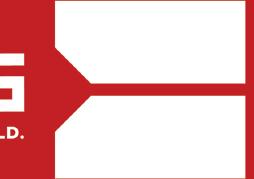
Designed around real people.
“The plant control system that MINDS designed for us has worked very well. The graphics depict the plant almost identically as built and are very easy to follow from the control room. Each value is shown with its position indicated by colours that make identifying issues, such as a stuck valve, extremely easy. The materials that we have produced with the system have been very consistent from the fi rst production run.”










Allen Hendricks, Vise President, Asphalt Divisions Manager Blythe Construction, Inc.

For the past 25 years, MINDS has built a reputation for user-friendly, advanced, customizable plant automation control systems. As of April 2022, we became part of the Astec family to add to their Rock to Road solution for asphalt road building. MINDS provides award-winning desktop software, mobile apps, and hardware for many applications:
Drums, Batches, Combo/hybrid hot mix plants, Emulsion plants, Liquid Terminals.
Silo load-out, Ticketing, and Cloud-based data management for the Rock to Road industry.
Better data. Increased control. Higher profi ts.
regulatory action is expected. Implementation of project delivery reforms, a key Republican IIJA priority, will also be a likely area of focus.
Copeland: The good news here is that IIJA is Public Law. IIJA sets the funding levels and establishes the highway programs that are now in place through 2026 irrespective of who controls the levers of power in Washington. The focus over the next year will be implementation of IIJA.
Huitt: Right now we are printing money we don’t have. We need to figure out who is going to pay for these initiatives. I think a change in legislative power will change that. I don’t know how our legislators expect to keep the gas tax the same and yet improve or even maintain our infrastructure given the inflation over the last 20 years.
Has there been any noticeable impact on the continued worker shortages or are companies still in need of more skilled workers?
hiring, but there simply aren’t enough willing and able workers to fill those positions.
Huitt: Worker shortages are still a very big problem.
Ingram: I can speak for our company and say that the worker shortage has continued, and it is not clear if it will get any better any time soon. Production and profitability have suffered.
Copeland: The Labor Department reported in October that there are nearly two vacancies for every unemployed worker—indicating just how pervasive and persistent this issue remains nationwide, across industries. While contractors continue seeking workers, there is no strong data to quantify any impacts that nationwide worker shortages are having on paving jobs or companies.
Q:What new suggestions or approaches should we consider as an industry to help create a larger pool of workers for the future, if the current methods are not making a big enough difference?
The shift toward Buy Clean policies is poised to have a significant impact on our industry. Through the Inflation Reduction Act, funding is available and agencies will be willing to pay a premium for construction materials with lower embodied carbon. Requirements to submit environmental product declarations (EPDs) will become the new normal. This is a paradigm shift for the asphalt paving industry, which has traditionally been a low-bid environment.
Balanced mix design (BMD) is the most innovative, currently available force for change. BMD empowers state agencies to relax prescriptive specifications and instead focus on performance.
Fritz: Companies are still desperate for workers. The number of unfilled construction jobs increased to 422,000 recently in September, the most in any month since at least 2000, when the Bureau of Labor Statistics began tracking it, and According to Associated Builders and Contractor’s Construction Confidence Index, approximately half of contractors intend to increase their staffing levels over the next six months.
Yet, the construction industry added just 1,000 net new jobs in October, and certain segments like specialty trade contractors and heavy and civil engineers actually lost jobs on net. Put simply, contractors have a level of work under contract that necessitates more
Fritz: Supporting significant immigration reform. Post-pandemic immigration levels have been historically low, and about 32% of all construction workers are foreign born, according to data from the Bureau of Labor Statistics. Domestic birth rates are as low as they’ve ever been, and an increased focus on career paths that require college degrees has limited the native-born construction workforce. As the average age of construction workers continues to rise, the industry will quite possibly need to rely on an increasing share of foreign-born workers.
Copeland: NAPA’s 2020 market research indicated that the most persuadable audience—those most interested in learning more about the industry—are women aged 18-24, without a college degree or children. This group wants financial security and was most persuaded by our industry’s equity in pay between men and women. Highlighting a company’s efforts to hire more women, emphasizing pay equity, would help recruit more workers from a largely underrepresented pool. In fact,
Contractors have been designing asphalt mixtures using volumetrics for decades, but a shift toward performance could allow contractors to become more innovative or use local materials or even more recycled materials—benefitting the public through better pavement performance, the agencies through potentially lower costs, and the environment through use of local, recycled, and/or novel materials
the Women of Asphalt was formed to highlight women in the industry and help companies with recruiting and retention efforts. Opportunities for individual companies include career fairs, job postings, social media, radio ads, or other interactions with the community. Moreover, your future employees want to feel like they are making a difference, especially in the area of sustainability, as evidenced in a recent Deloitte study. Companies that share their story on sustainable practices and efforts to reduce carbon emissions are more likely to attract and retain those workers.
Ingram: Previously, raising wages and increasing benefits was the answer. That doesn’t seem to be the fix any more. Our industry is unique in that travel for work is a requirement. Working

Q:Fritz Zachary Fritz is the chief operating officer at Sage Policy Group, an economic and policy consulting firm.


Introducing Carbophalt ® G from Simpson Strong-Tie — a reinforcement grid made of durable, high-tensile-strength carbon fiber that strengthens asphalt roads and highways. Unlike other asphalt reinforcement products, its open-grid design is fully saturated with bitumen, helping it form a powerful, long-lasting bond between asphalt layers. Our innovative grid distributes loads more evenly, increases load-bearing capacity and makes roads more resistant to cracks, potholes and rutting. Ideal for new construction or resurfacing, this grid is tested and proven to extend the service life of paved surfaces, delivering greater economic value over time. And, it’s easily milled and recycled, making it reusable and highly sustainable. Installation is fast and easy with our grid machine, which is available with complete training for operators. Take asphalt performance further. To learn more about Carbophalt G asphalt reinforcement grid, contact your Simpson Strong-Tie representative. Visit go.strongtie.com/asphalt or call (800) 999-5099.

from home is not an option. We pull from a finite group of candidates. [I think] work ethic is not what it once was.

Q:Companies continued to see rising costs related to materials, and still, some see the availability of those materials as inconsistent. Are American suppliers stepping up to fill some of those gaps? Have contractors seen any improvements over last year? What’s the forecast for these shortages into 2023?

construction. The average cost of highway and street construction inputs is up about 13 percent compared to last year, according to data from the U.S. Bureau of Labor Statistics. While this is largely driven by the rising cost of energy and fuel, prices are up for most goods, services, and commodities.
The impact on state construction programs can vary significantly, depending on the region and type of projects. This was underscored in a survey of ARTBA state chapter affiliates. Forty-eight percent reported state DOTs had canceled, delayed, or pulled projects from the letting schedule because of issues with material costs or availability. Fifty-two percent reported that had not been the case in their state.
patterns suggests that overall, low bids are coming in about ten percent above engineer’s estimates. Meanwhile, the value of state and local highway and bridge contract awards is up 20 percent. This suggests that while material prices and rising costs are an issue, there is still real growth in the market.

Huitt: Most of the material shortages are starting to ease. Lead times are still an issue. Issues with China may hurt a lot going forward.

Black: The impact of rising costs and the availability of materials is an issue that has impacted every industry in the U.S. economy, including highway


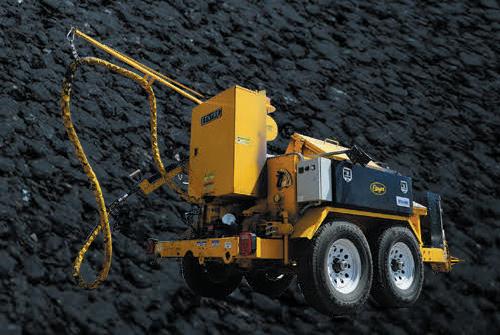




Nearly all respondents agreed that engineers’ estimates have been less accurate because of rising material costs. Research by ARTBA on state bid
Ingram: While material costs have certainly risen significantly, the availability has not been dramatically affected. Like everywhere else, the throughput of these costs to the customer has affected the amount of work that can be accomplished due to budgets not keeping track in many situations.
Fritz: Shortages are easing, and that has a lot to do with overall supply chains. International shipping costs have
fallen dramatically due to lower energy prices, decreased global demand, and a reduction in covid-restrictions at ports around the world. As the global economy weakens heading into 2023, pressures on materials prices and availability should abate, freeing up supply for domestic contractors.





Q:There has been murmurings by some economists that 2023 could see a potential recession. In either case, whether the economy goes into recession or not, how might that impact our industry as it currently stands?
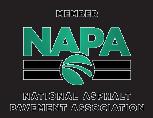
Copeland: As an essential public service, the asphalt pavement industry has been very resilient over the years, even during recessionary periods. The fact that Congress enacted the largest public works ever when IIJA was signed into law by President Biden guarantees highway project funding through 2026. What we are seeing at the end of 2022 is that many projects have either been obligated or put out to bid, with the expectation that these projects will be carried out next year. Backlogs are at record levels and that will keep the industry busy even if the country dips into recession next year. There is no doubt that the recession may impact private markets, but we do not anticipate a significant downturn in the public markets, which represent the majority of the asphalt pavement industry’s funding source.
Huitt: I feel our industry is relatively recession-proof although not completely. If the government embarks on a public works program to offset the recession, that could be a positive.
Ingram: In our part of the industry, pavement preservation, we may not be affected quite as significantly as the construction side.
Fritz: Privately financed nonresidential construction stands to be negatively impacted by a recession in 2023, especially in already beleaguered categories like office and commercial jobs. While the residential segment will likely be negatively impacted, it will be difficult to separate the impacts of the highest borrowing costs in decades, which have brought home-buying to a standstill, from the effects of a recession. One potential benefit of a recession is that it could potentially ease labor constraints, helping contractors to increase staffing levels while reducing upward pressure on wages.
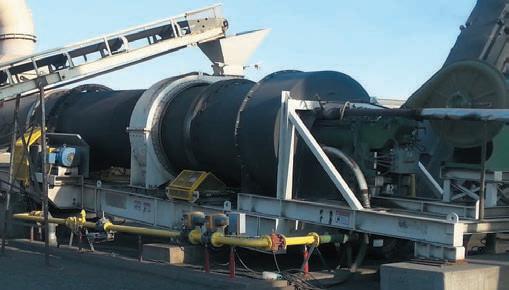

Q:If the road building industry is “recession proof” or, in certain circumstances, even better when the economy isn’t as good in general. How is that reflected?
Black: States plan to increase highway and bridge capital spending by 13 percent in 2023, according to an ARTBA analysis of state Department of Transportation budgets, driven in large part by the IIJA. While transportation construction is not immune from broader economic trends, the multi-year investment levels in the IIJA provide some stability for the industry.
In addition to growing federal investment, state and local governments continue to increase their own transportation revenues. On Nov 8, voters approved nearly 88 percent of 380 transportation funding measures on the ballot. Since 2010, voters in 44 states have approved an average 85 percent of nearly 3,000 state and local ballot measures.
With much attention on equity, climate, resilience, innovation, and disruption, we’d be remiss if we didn’t acknowledge how the industry has coalesced behind The Road Forward, NAPA’s collective initiative to achieve net zero carbon emis sion asphalt pavements by 2050. The Road Forward was designed by members, for members, as well as the entire U.S. asphalt industry. NAPA launched The Road Forward in early 2022 having already identified a decades-long work plan, because it will take a concerted, industry-wide ef fort to achieve that audacious goal. Afterward, we saw an outpouring of support from the industry, with public and private companies stepping up to con tribute. In the program’s first year, NAPA welcomed 25 fund ing partners of all types: mix producers, additive suppliers, equipment manufacturers, and technology innovators. Their experience with each other and with agencies and road owners will truly inform this work. We expect the partnership to grow, bringing all of these and more industry partners together to solve one of the most impor tant issues of our time.
Ingram: Historically road agencies may not have all of the needed funding to increase capacity or build new infrastructure, but they have an obligation to maintain what is already in their inventory. Some of the best years in the pavement preservation industry have come during economic downturns.
Fritz: While spending in the high way and street category held up nicely during the Great Recession (20082009), it fell back to earth during 2013, likely due to strained government financing. So, while road building may fare well during recessions, it might simply be feeling the harmful effects on a lag.
Q:In a time of rapid change, like the last few years, have there been procedures that have changed for the better? (i.e. use of more e-ticketing and online collaboration software) How is this benefiting contractors?

Copeland: Tools that aid in commu nication are changing the industry the fastest. Software that allows real-time communication and documentation between different parts of the project team means people can make moreinformed decisions and set the stage for a better understanding of pavement performance. As construction is digitally documented, as the pavement comes to the end of its usable life, future engi neers will be able choose appropriate rehabilitation strategies for ensuring the pavement continues to give pack to the driving public.
Ingram: E-ticketing and other technological ways to streamline communication (not only with the agency, but the traveling public through outreach), document submittals, etc. has helped in all facets of project management and closeout. All that helps expedite payment as well!
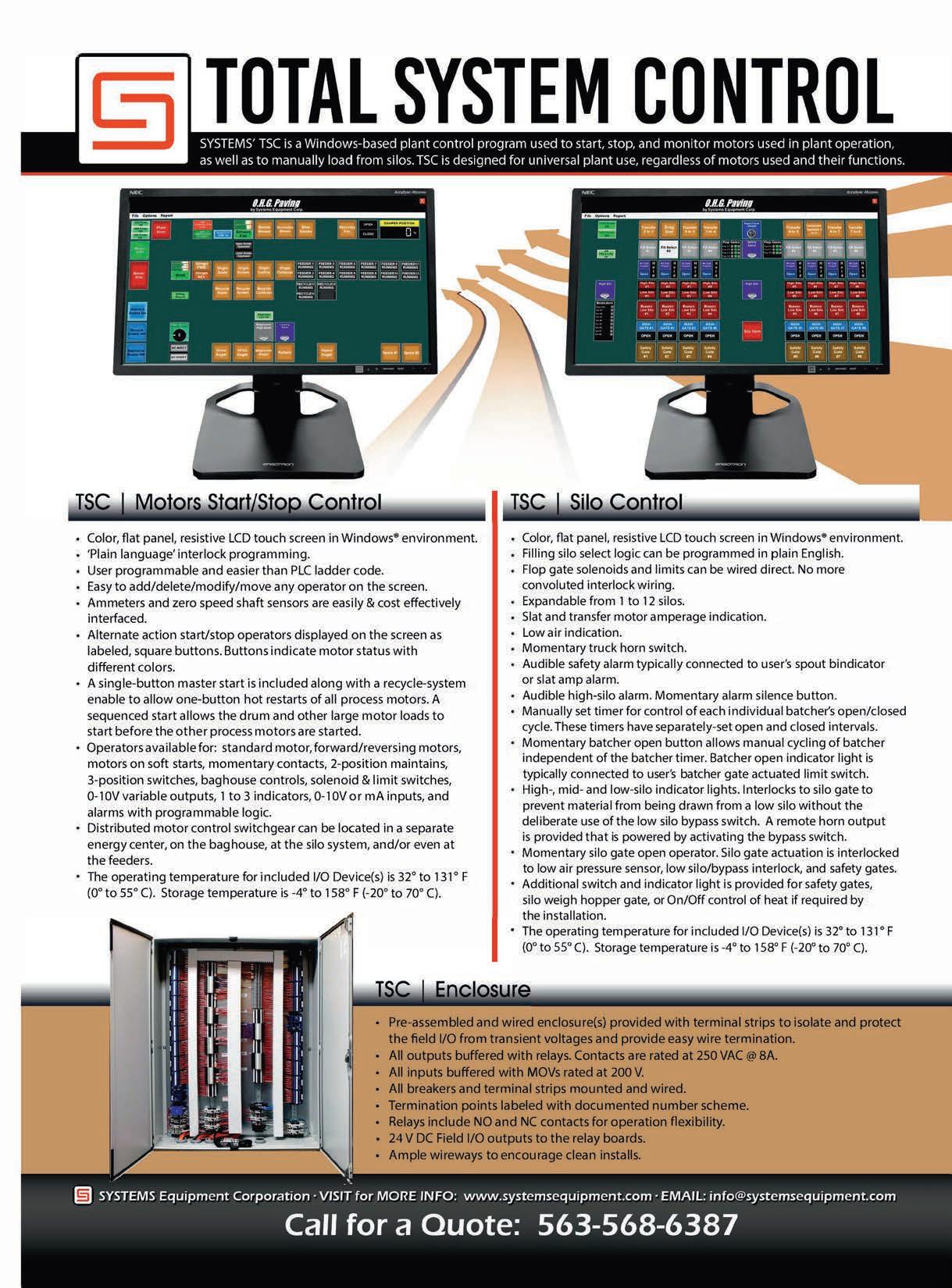
Q: Has the pandemic/post-pandemic helped or hindered technology adoption for the industry in the future?
Copeland: The pandemic spurred some technology adoption, such as e-ticketing. Including e-ticketing as part of FHWA’s Every Day Counts initiative was a direct response to the pandemic. In the early days of the pandemic, we still did not have much information about how the virus spread, and people did not want to be passing paper tickets between parties and needed to maintain social distancing. Therefore, e-ticketing was an off-the-shelf solution that com panies began to implement.
Huitt: It should help. The pandemic has a lot to do with worker shortages, so companies will want to automate to provide relief.
Ingram: We have learned many lessons in the past 2-3 years on how to use technology to our benefit. From an old school perspective, we have also learned how to “hide”. It is still construction here, people need to get back to work and be present when decisions have to be made.

The IIJA and the Inflation Reduction Act (IRA) were both originally part of the same overall legislative vision from the Biden administration referred to as Build Back Better. The IIJA focused on the literal physical infrastructure, and what would become the IRA as a bill more focused on the human element. However, the IRA is contained the largest single spending measure in U.S. history in regards to addressing climate change. While the IRA addresses a sprawling number of issues facing the country--the provisions that are of greatest concern to the asphalt industry are in regards to climate change and emissions reduction. There are 7 of these key funding opportunities with billions of dollars in incentives for the industry.
• Environmental Product Declaration Assistance - To support the development, enhanced standardization and transparency, and reporting criteria for EPDs that include measurements of the embodied greenhouse gas emissions of the material or product associated with all relevant stages of production, use, and disposal, and conform with international standards for construction materials. Grants will also be used to developing and verifying EPD’s and providing technical assistance. $250 million to remain available until September 30, 2031.
• Low-Embodied Carbon Labeling for Construction Materials - To identify and label construction materials and products that have a substantially lower levels of embodied greenhouse gas emissions associated with all relevant stages of production, use, and disposal, as compared to estimated industry averages of similar materials or products as determined by EPA based on EPDs, or as verified by State agencies as verified by EPA. $100 million to remain available until September 30, 2026
• Use of Low-Carbon Materials - To procure and install materials and products used in construction or alteration of buildings under the jurisdiction of GSA that have substantially lower levels of embodied greenhouse gas emissions associated with all relevant states of production, use, and disposal as compared to estimated industry averages of similar materials or products, as determined by EPA. $2.15 billion to remain available until September 30, 2026
• General Services Administration Emerging Technologies - For emerging and sustainable technologies and related sustainability and environmental programs. $975 million to remain available until September 30, 2026.
• Low-Carbon Transportation Materials Grants - To reimburse or provide incentives for the use, in projects, of construction materials and products that have substantially lower levels of embodied greenhouse gas emissions associated with all relevant stages of production, use, and disposal as compared to estimated industry averages of similar materials or products, as determined by the EPA. The amount of reimbursement shall be equal to the incrementally higher cost of using such materials relative to the cost of using traditional materials. The incentive amount shall be equal to 2 percent of the cost of using low-embodied carbon construction materials and products. The total federal payable share of a project for which a reimbursement or incentive is provided shall be up to 100 percent. $2 billion to remain available until September 30, 2026
• Advanced Industrial Facilities Deployment Program - To award grants on a competitive basis for projects designed to accelerate greenhouse gas emissions reduction progress to net-zero at eligible facilities that (1) purchase, install or implement advanced industrial technologies or (2) retrofits, upgrades, or operational improvements at an eligible facility, or (3) engineering studies and other work need to prepare the facility for such a project. The grant may be up to 50 percent of the cost of the project. The DOE shall give priority for projects on the basis of expected greenhouse gas emissions reductions to be achieved, the extent to which the project would provide the greatest benefit for the greatest number of people within the area, and whether the eligible entity participates or would participate in a partnership with purchasers of the output of the eligible facility. $5.812 billion to remain available through September 30, 2026.
• FEMA Build Materials Program - To provide financial assistance for the cost of using low-carbon materials and incentives that encourage low-carbon and net-zero projects. Existing Budget, No New Funding.
Q:How can contractors be prepared for change and what can help them adapt faster?
Copeland: Asphalt mix producers can prepare for upcoming Buy Clean policies by learning about and developing EPDs for their asphalt plants. See AsphaltPavement.org/EPD. Contractors need to familiarize themselves with what his happening in their state and region. NAPA’s BMD Resource Guide
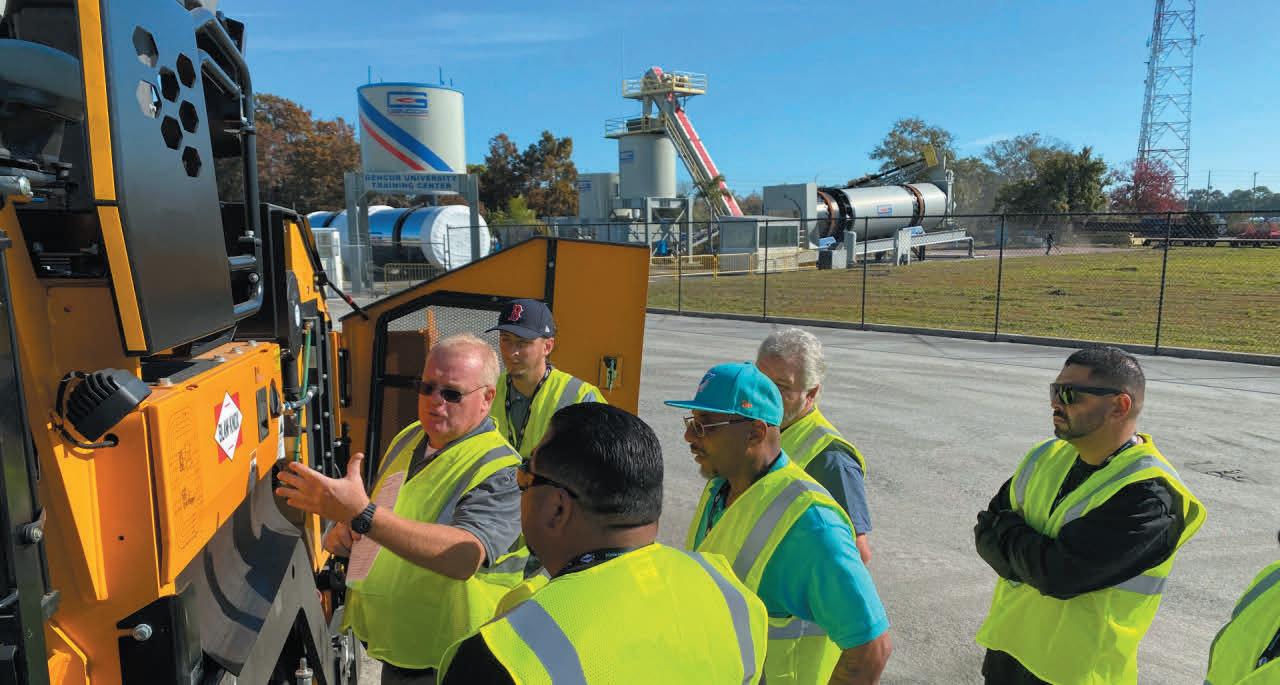
(AsphaltPavement.org/BMD) provides information on what states are doing and which tests are being considered. Additional tools are available to help contractors enter this new era of mix design with a better understanding of how to succeed.
Huitt: They should stay in close contact with their customers, and ask a lot of questions. Get involved with their industry associations.
Ingram: There always be ways to adjust what we do, but again, in this industry if we focus on doing what we do better, like communicate on all levels, adapt to new needs of employees and provide customer satisfaction (imagine that!) we will be fine.
For more information visit http://asphalt.com/ ACONCSHVAPC
The Blaw-Knox University, now in its 58th season, is dedicated to training paver operators and foreman on proper Paver Operation and Maintenance and applied Best Paving Practices through classroom-style and hands-on application courses.
For over a half a decade Blaw-Knox has earned its reputation as the go to source of training and instruction on hot mix paving.
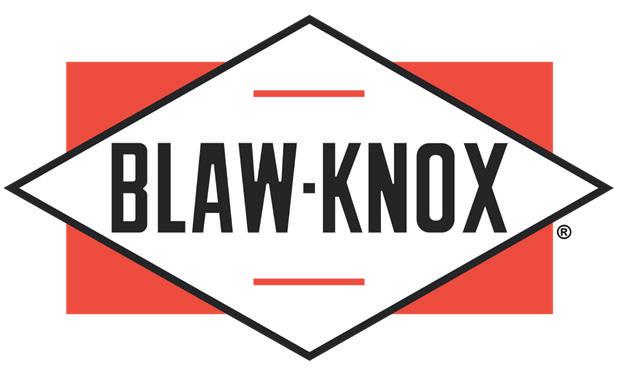

Blaw-Knox provides improved technical and problemsolving skills on a variety of paver operations and maintenance topics. Course instructors share decades of field and teaching experience with attendees, including training on the latest DOT requirements.
Blaw-Knox offers multiple dates to satisfy the demand for its popular courses.
Recruiting and retaining workers in construction is paramount as the industry grapples with a 650,000 person labor shortage. There are lots of gimmicks, tips and life hacks out there promising to help construction companies attract, hire and keep workers. Successful construction companies know solving the workforce challenge starts with great employers.







To recognize those companies, the sta of Equipment Today, Asphalt Contractor, Concrete Contractor, Pavement Maintenance & Reconstruction, and their digital hub ForConstructionPros.com, hosted the Best Contractors to Work For recognition program, a research-driven analysis that examines a company’s practices, programs and bene ts, and surveys its employees for their perspective.






To be considered, employers needed to register, while employees lled out surveys about what it’s like to work for their boss. Entry forms and surveys were handled by the Best Companies Group, which analyzed the data and provided an actionable insights report that companies can use to improve employee recruitment and retention.
To be eligible, construction companies must have 15 full- or part-time employees working in the U.S. The company’s primary business activity must be either general building construction, earthmoving, paving, concrete, or specialty and trades, such as underground, utility, electrical, HVAC, demolition and others.




Want to be considered for the 2023 Best Contractors to Work For?
Please contact Cathy Somers at: CSomers@ACBusinessMedia.com




















Aggregates made from expanded shale, clay or slate (ESCS) enhance road safety not just when the pavement is placed, but throughout the life span of the product.
Safer roads begin with safer materials. Lightweight aggregate’s ability to improve road surfaces is due to its manufacturing process. The raw material is heated to 2000 degrees Fahrenheit in a rotary kiln. During this step, it softens and air bubbles form. The bubbles remain as unconnected pores when the aggregate cools. These voids inside ESCS particles allow the oil sealant to penetrate deep within the aggregate mix, resulting in fewer incidents of dislodged pavement. They also resist polishing to maintain a high level of skid resistance.
While these qualities help contractors create safer and longer lasting roads, they are not the only ways lightweight aggregate made from ESCS can create higher quality asphalt chip seal. After the material cools, it is crushed, sifted and re-crushed to create a highly regulated particle size. This not only ensures consistent coverage but also reduces the damage large chips may cause to paving equipment. In these
ways, asphalt chip seal made from ESCS improves paved surfaces from the day it’s placed to the day it’s replaced. The following takes a closer look at the many ways bond strength, polish resistance and consistent chip size contribute to safer and higher quality roads.
ESCS’s internal network of uncon nected pores increases the bond strength between it and the oil sealant. This leads to a greater percentage of chip retention when the asphalt chip seal is first placed.
In fact, Carbon County, Utah noted that initial chip retention increased from 30 percent with quarried materials to 99 percent with ESCS in a 2017 report.
Greater chip retention means fewer passes that crews must make to achieve adequate coverage, reducing labor costs and wear-and-tear on equipment. It also means vehicles kick up fewer chips during construction, reducing damage to constituent cars and potential injury to nearby crew members. The increased bond strength also resists raveling and dislodgment as the chip seal ages—even in areas that experience harsh weather.
For example, to test the durability of asphalt chip seal made with ESCS lightweight aggregate, the Utah Department of Transportation (UDOT) resurfaced 20 miles of interstate with the material. After a year, representatives from UDOT reported there were no areas where chips had been dislodged
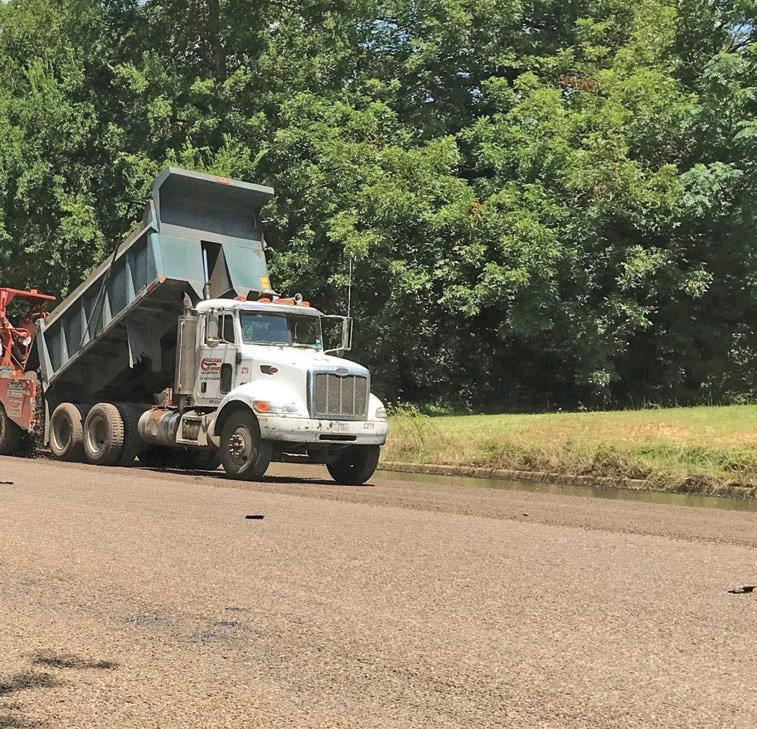
and no claims or complaints about vehicular damage. It is important to note that during this timeframe, the asphalt chip seal experienced the extreme heat of Utah summers and the weathering caused by snowplows and de-icing equipment, both of which can prematurely damage a paved surface.
Not only does the initial and long-term bond strength of asphalt chip seal create safer roads, but it also means less expenditure on mainte nance and repair over the lifespan of the material, both of which translate to a higher quality road.
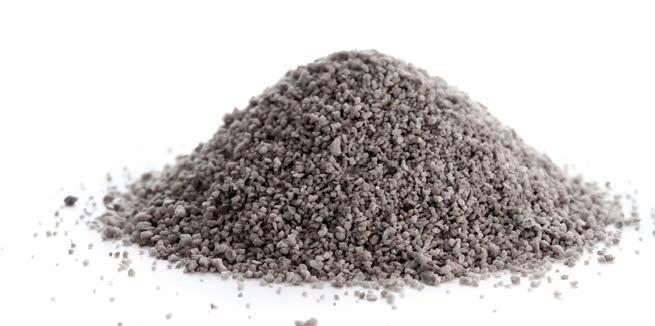
The voids within ESCS particles also create a high-friction surface for a substantially greater skid number than quarried materials. Because these voids
are found throughout each particle, lightweight aggregate in asphalt chip seal resists polishing, the process through which a pavement becomes smoother over time. While quarried materials’ skid number declines drastically as vehicles pass over it, ESCS has a surface that is constantly renewed, maintaining a relatively static skid number throughout its service life. Since lightweight aggregate provides a longterm, high-friction surface, it can help increase the stopping rate of vehicles. This can contribute to fewer collisions, resulting in a lower number of roadside injuries and fatalities.
It also provides more grip to preserve safer driving conditions during heavy rains. According to the Federal Highway Administration, over 544,700 people are injured in crashes on wet pavement annually. The high-friction surface of asphalt chip seal made from ESCS can help reduce these numbers by mitigating unsafe driving conditions caused by inclement weather.
Improving safety in all conditions is a measure of paving quality. Asphalt contractors who use lightweight aggre gate in their chip seal can point to skid and polish resistance as key components of assessing the ability of pavement to provide value.
“Greater chip retention means fewer passes that crews must make to achieve adequate coverage, reducing labor costs and wear-and-tear on equipment.”All Photos by ESCSI Asphalt Committee
Because lightweight aggregate is processed, manufacturers can highly regulate particle size—unlike quarried materials that can have chip sizes that vary widely. Since quarried materials cannot be regulated as closely, a large rock may make it into an asphalt chip seal mix and clog the machinery. This delays project completion, increases construction costs and puts crews in danger unnecessarily.
Lightweight aggregate’s consistent particle size sidelines the risk of equipment damage to create safer working conditions and reduce the time needed to complete a paving project. Further, consistent particle size helps contractors more accurately estimate material costs. It also helps reduce oil shot rates to improve road surfaces in a cost-efficient manner.
Likewise, the consistent and lightweight nature of ESCS can decrease potential for damage while increasing coverage. Because lightweight aggregate can weigh up to 75 percent less than quarried material, contractors can see more miles of coverage per ton. In addition, if a piece of pavement were dislodged, its lightness would lessen the force of its impact, causing fewer and smaller damages to vehicles in general.
The consistent particle size and reduced weight contribute to safer and more efficient construction as well as safer roads in the event of pavement damage.

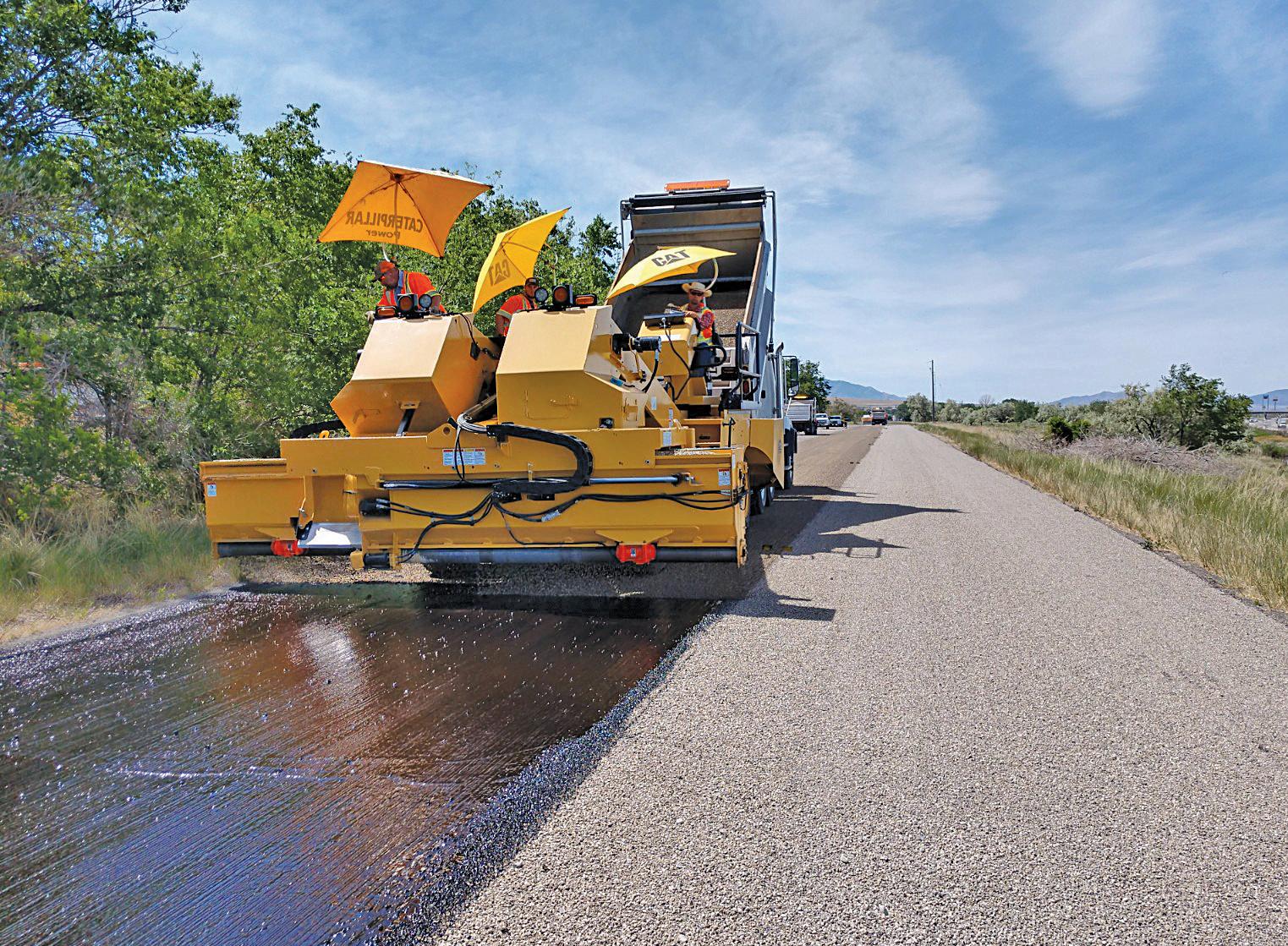



Due to its increased bond strength, high-level of skid resistance and particle size and weight, lightweight aggregate can help improve asphalt chip seal and thereby improve the safety and quality of the roads that use it. As such, this material can help departments of transportation and asphalt contractors around the country create better and more resilient roads, benefitting both the professionals that maintain them and the drivers who use them.
For more information visit http://asphalt.com/ nw5x9q



















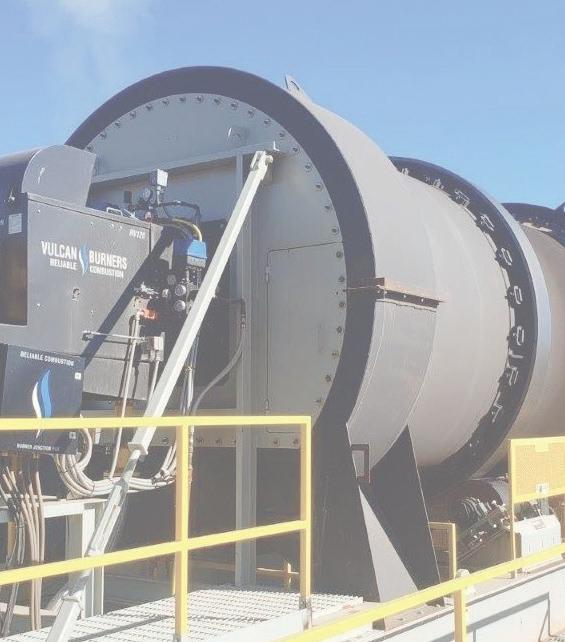










Our industry is composed of problem solvers who build America. While we are dedicated and hard working, we can be quite slow to change and adapt. With the end of the year upon us, it’s time to reflect on your business goals and find ways to take your business to the next level in 2023.

Executing world-class performance requires contractors to continuously innovate and new technology to help construction contractors do their jobs faster and more efficiently is emerging every day. Investing in various construction technologies for your business will help construction companies innovate, differentiate themselves and attract and educate their top talent. Make 2023 the year you choose to lead, commit and innovate with new construction technology. Not sure where to start? We deep dive into thousands of construction technology solutions on our website, IronPros.com. You are sure to find a solution to your biggest pain point that will help you.
Some builders run with the attitude of, “I’ve done my apprenticeship - I work on site every day. I know what I’m doing. So why do I need any more training?” But the truth is, new products come on the market all the time, and acquiring new skills - whether that’s mastering
a new product, or learning more about health and safety, business management or bookkeeping, help you to improve both as a company and as a person.
Not only that, but your crew needs training as well. Training is essential for your company to stay competitive in an industry that’s changing faster than we realize. It’s also an important key to keep your employees happy and invested in their careers. This is especially true for the younger workers who desire training and growth and who are going to carry your company in to the future. What professional development opportunities will you look into for your business and your team in 2023? Check out our events at https://www.forconstructionpros. com/events.
Governments across the world are cracking down on health and safety, and workers are starting to stand up for their rights and demand a safe workplace. How safe is your site? Does your team have a good culture around health & safety, or are they derisive of tools and systems designed to prevent accidents.
Perhaps 2023 is the year to focus on bringing down the number of accidents on your sites to zero. We have an entire library of safety articles for your to sort through on www.ForConstructionPros.com.
In order to move your business
forward, you’re going to need to take a hard look at your company and the resources you have. If there are areas you’ve been considering making an upgrade, the time is now.
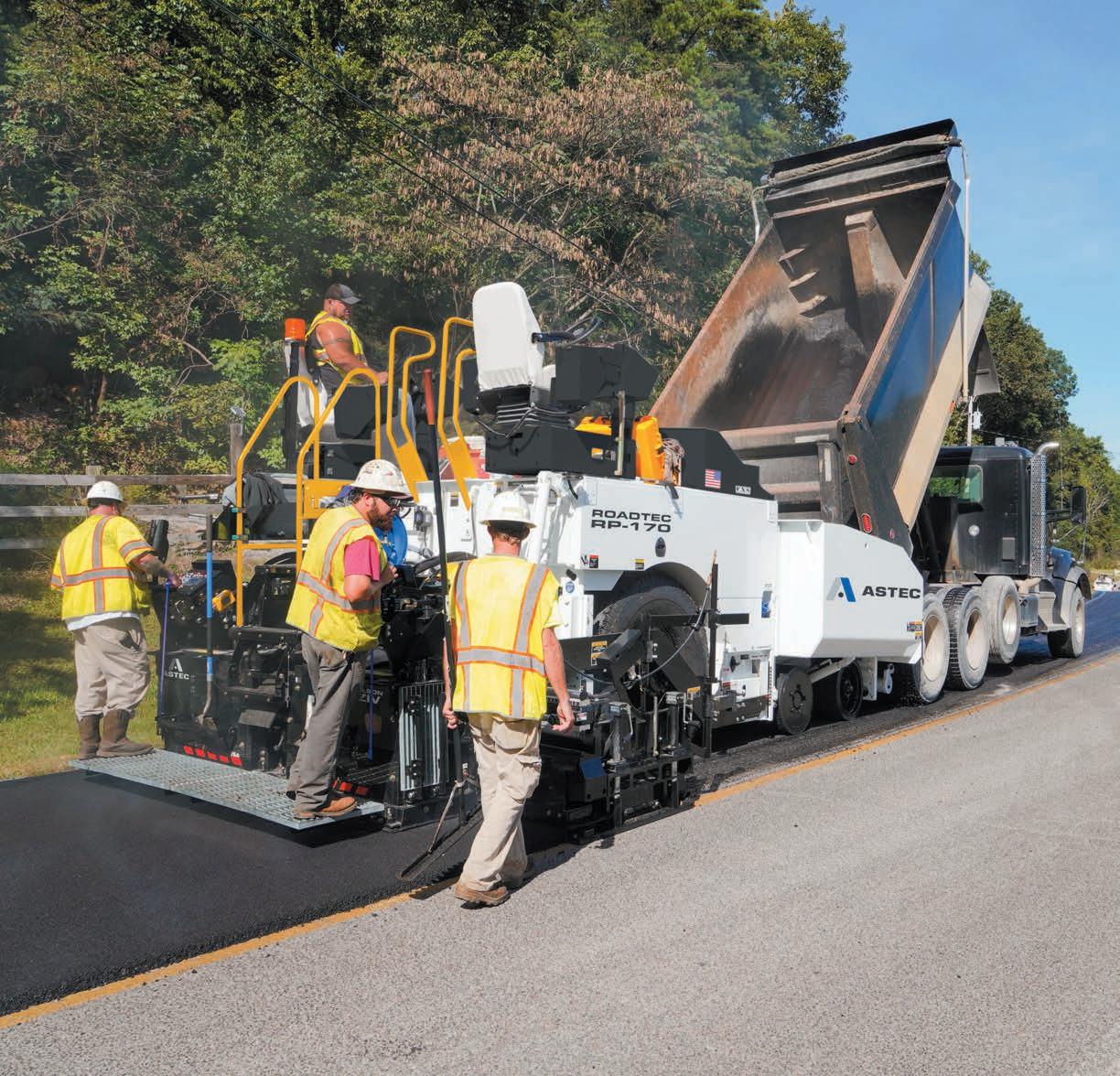
One way asphalt contractors and producers can keep up with our ever-changing industry is by familiarizing themselves with the newest equipment upgrades and technology the industry has to offer. From new iron to innovative ways you can keep track of your materials, manufacturers are working hard to make your job easier and we’re working hard to keep you up to date on the latest out there to help.
Innovation in the construction industry is happening very fast.
It’s more important than ever for construction contractors to be adaptable. Keep on top of industry trends, funding opportunities, best practices and new equipment to keep your company ahead of the game. Joining an association or attending tradeshows and networking events can be a great way to keep your business up to date.
Change is difficult, but losing business to a more progressive competitor is a much worse outcome than getting outside of your comfort zone.
Let’s all resolve to grow in 2023... and beyond.
For more information visit http://asphalt.com/ mjw7dn
There has never been a more pivotal time for contractors to embrace change and meet the future of road buildingAdobe Stock Denis Rozhnovsky
We help build the roads that connect goods to markets, people to communities and families to one other. Astec pavers, screeds, mills, stabilizers and MTVs yield innovative and reliable Rock to Road solutions that create value and connection. We are inspired to connect with our customers through innovative design for safe and reliable roads.

Designed with safety and comfort in mind, the SB-3000 Shuttle Buggy ® MTV features adaptive cruise control, bright LED lighting, four-wheel steering for easy transport and ground-level maintenance access. Operators can rely on clear sightlines and the ground operator is safely protected inside the structure of the machine.
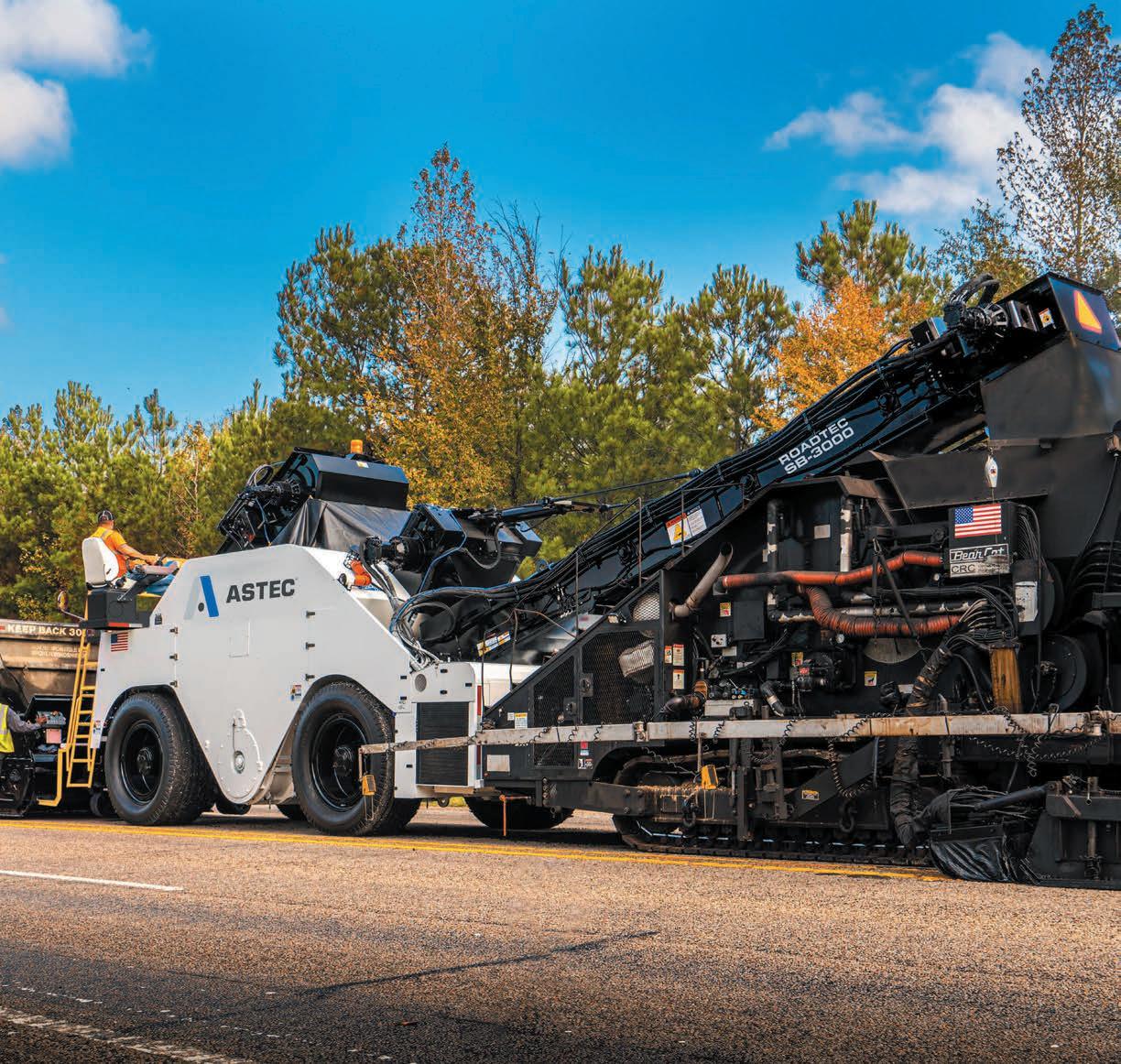
Scan to learn more about the SB-3000